Posts tagged with Tutorial
Here you can find a listing of all posts with the tag Tutorial on my page.
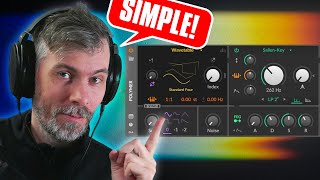
Nov 03, 2025 Tutorial
In this video, I demonstrate how to create classic and straightforward synth sounds in Bitwig Studio using simple subtractive synthesis without heavy processing, allowing you to easily follow along and understand the foundations behind iconic tones. I also introduce a free resource on my website where you can find step-by-step guides, preset downloads, and detailed explanations for each patch. Throughout the video, I cover essential sounds like house organ basses, jungle and rave basses, techno leads, dub chords, and FX noises, emphasizing simplicity and the power of filters and basic waveforms.
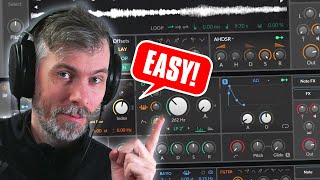
Oct 29, 2025 Tutorial
This tutorial explains how to create classic synth sounds like reese bass, EDM plucks, synthwave bass, rave sounds, pads, e-pianos, and bell tones using basic subtractive and FM synthesis techniques in Bitwig Studio, but the concepts work in any DAW or synthesizer. The key is understanding the foundation of classic sounds, such as detuning saw waves, using filters, modulation, layering samples, and effects, and then customizing or layering them for something more unique. Mastering these fundamental techniques allows producers to easily recognize, modify, and build their own sounds, rather than just copying presets or other artists.
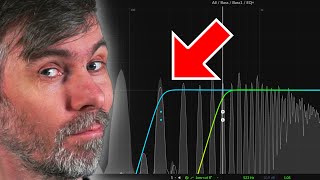
Oct 24, 2025 Tutorial
This video explains how to use Bitwig Studio to add or replace harmonics in a bass sound, such as adding a sine wave an octave higher or creating a super clean sub-bass by layering and filtering techniques. The tutorial demonstrates several methods, including using instrument layers, the wavetable oscillator’s remove fundamental feature, steep EQ cuts with key tracking, and dynamic envelope following to blend clean sine partials with processed bass sounds. It also highlights Bitwig's flexibility for customizing harmonics and encourages experimentation with different device combinations for both MIDI and audio sources.
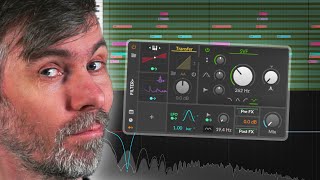
Oct 21, 2025 Tutorial
In this Bitwig tutorial, I demonstrate how to use key tracking with EQ5 to dynamically shape harmonics of bass sounds in response to changing notes, a technique not easily achievable with most VST plugins. I also show how to use key tracking and sidechaining to remove clashing frequencies between instruments, all within Bitwig’s flexible modulation system. These methods allow for deep and musical control over your sound design, and presets are available for download on my GitHub.
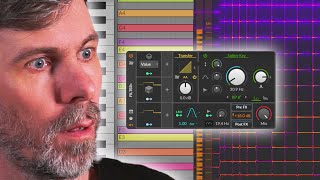
Oct 15, 2025 Tutorial
This video demonstrates how to modulate filter frequencies in Bitwig (or any modular DAW) so modulation lands on musical notes within a chosen scale, not just random frequencies, by using harmony theory and quantizers. The key insight is that most Western scales are constructed by stacking perfect fifths (seven semitones apart), so you can use a quantizer set to six steps and a modulation range of 42 semitones to achieve accurate, in-scale modulation, with an initial frequency offset depending on your root note. This method provides a musically meaningful way to randomize your sound design while always staying within your chosen key, and is applicable to any environment that allows semitone-based modulation.
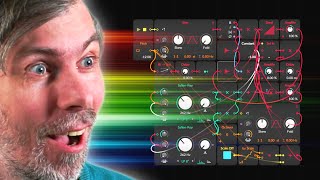
Oct 06, 2025 Tutorial
In this video, I demonstrate a custom-built FFT resynthesizer and note extractor inside Bitwig Studio, which uses pure sine oscillators to extract and recreate audio frequencies without traditional bandpass filters. The system allows for unique spectral manipulation, including stretching sounds, octave shifting, and removing partials outside a selected musical scale, making it perfect for ambient effects and creative sound design. I also show how this setup can extract MIDI notes from audio and explain the straightforward method behind building it, with presets available for free download.
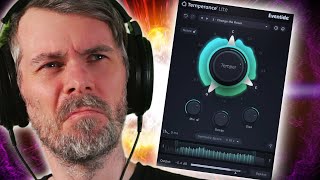
Oct 03, 2025 Tutorial
Temperance Light is a plugin marketed as a revolutionary musical reverb, but it essentially combines a reverb with a filter, offering a polished look but limited flexibility. In Bitwig Studio, you can easily recreate and expand on its features using onboard devices, allowing for much more customization, like choosing your own reverb, filter types, and even adding delays. By building this effect yourself, you gain deeper creative control and a better understanding of sound design, rather than being restricted to a single, fixed plugin.
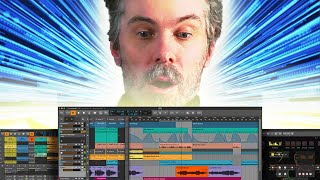
Sep 29, 2025 Tutorial
This video highlights why Bitwig Studio stands out for its hands-on modularity, allowing users to easily create unique instruments and effects without coding or complex visual languages. Bitwig’s flexible modular system empowers both beginners and advanced producers to experiment, learn synthesis fundamentals, and develop custom sounds beyond what preset-heavy plugins offer. The creator emphasizes the value of creativity and learning through Bitwig’s tools, making it an ideal choice for anyone seeking a customizable and educational music production environment.
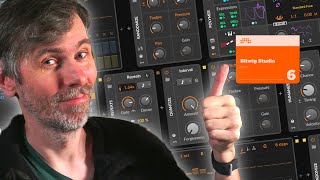
Sep 23, 2025 Tutorial
In this walkthrough of Bitwig Studio 6, I demonstrate how to use the new global scale feature to create dynamic and interesting sequences by combining a variety of note effects and MIDI processing tools. By relying on note FX like arpeggiators, randomizers, and quantizers, you can quickly generate complex basslines, melodies, and pads that always stay in key, making generative and experimental music workflows much more accessible. This approach allows you to break out of repetitive habits and explore fresh melodic ideas without being tied to manually drawing notes, harnessing the power of modulation and scale quantization for creative results.
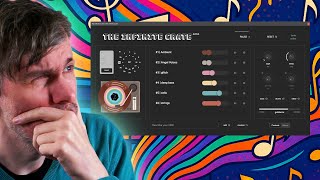
Sep 17, 2025 Tutorial
This video reviews the Infinite plugin, a free AI-powered tool, likely made by Google, that generates an endless stream of music based on user prompts and context, allowing detailed control over the composition process. The creator acknowledges concerns about AI, such as data usage from artists and environmental impact, but is interested in exploring its creative potential and hopes for future open-source or local versions. Overall, the plugin inspires fresh ideas and background textures for musicians while letting them directly shape the generated output, despite some technical limitations and the broader uncertainties about AI in music creation.
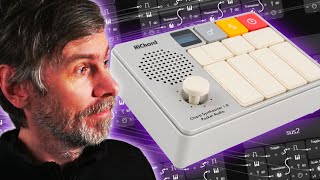
Sep 15, 2025 Bitwig Preset
In this video, I demonstrate how to recreate the functionality of the popular hardware device, the High Court, inside Bitwig, allowing you to play and modify diatonic chord progressions using your keyboard instead of spending hundreds on the physical unit. I showcase how to set up and use my Bitwig preset for easy chord selection and modification, and how to record the results into a MIDI track. You can download my free preset from GitHub, and I'm open to feedback or requests for additional features or Bitwig Studio 5 compatibility.
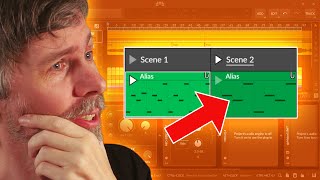
Sep 09, 2025 Tutorial
This video explores the alias clip feature in Bitwig, which allows users to copy and link clips so that changes to one affect all linked versions, but highlights potential issues with accidental changes in complex projects. The presenter appreciates the flexibility of being able to alter container properties like length or start position without changing the clip's contents and sees potential if alias clips could span across different tracks. They suggest improvements such as more inspector controls and cross-track aliasing, but personally prefer working with unique clips rather than relying heavily on the alias feature.
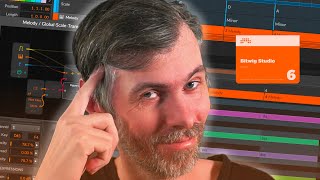
Sep 04, 2025 Tutorial
In this guide, I demonstrate how to use Bitwig Studio 6’s global scale and a custom preset to automatically transpose notes to the correct root when switching scales, solving the tedious process of manual transposition. By leveraging the note grid and new modules like root key and pitch class, you can easily adapt your melodies and harmonies across changes in key signatures. This method lets you freely compose in different scales without worrying about root note adjustments, making scale modulation seamless and creative.
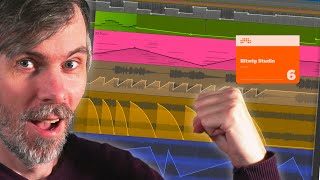
Sep 02, 2025 Tutorial
Automation in Bitwig Studio 6 introduces improved visuals and helpful new tools, but the workflow changes, like moving buttons and making it harder to see MIDI notes or quickly add/delete automation lanes, can be frustrating, especially for users familiar with Bitwig 5. Despite some minor design annoyances and added clicks in the process, the enhanced features such as randomization, smarter node handling, and flexible clip-based automation are genuinely powerful and enjoyable. Overall, the automation system is much improved, though small fixes to workflow consistency would make it nearly perfect.

Aug 31, 2025 Tutorial
Bitwig Studio 6’s new scale highlighting feature makes it easy to visualize, create, and modulate melodies and harmonies in different scales and modes, helping both beginners and advanced users make more intentional music. The feature supports global and local scale selection, real-time automation, and integration with tools like arpeggiators and note effects, allowing users to experiment with brightness, darkness, and complexity. While primarily a highlighter rather than a full automatic transposer, it’s a valuable addition for making music theory more accessible and practical in your workflow.
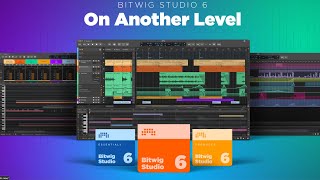
Aug 27, 2025 LiveStream
Bitwig Studio 6 has finally arrived, bringing a host of powerful new features, especially major automation improvements like automation clips, aliasing, and advanced editing tools that put automation on par with audio and note editing. The update also introduces global key signatures, enhanced note expression capabilities, and an updated dark interface, making both workflow and creative possibilities much more flexible and efficient. Overall, this release delivers numerous small and large improvements across the board, ensuring a snappier, more inspiring experience for all users.

Aug 18, 2025 Bitwig Preset
I'm sharing a free Bitwig preset called BND Wave Cycle Bender, inspired by Colugo's BND device for Reaktor, which applies pitch-tracked phase modulation to audio for unique distortion effects. This tool allows you to add new harmonics and character to your audio samples by tracking pitch and modulating them with a sine oscillator, with adjustable delay and modulation settings for creative results. You can download the preset from my Patreon or GitHub and experiment with it on your own sounds to discover interesting textures and effects.
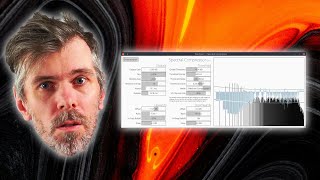
Aug 12, 2025 Tutorial
In this video, I discuss how to use the free and open-source spectral compressor plugin in Bitwig for precise sidechaining and frequency ducking, especially when working with combined drum loops and bass tracks. I demonstrate how its audio-rate processing and flexible attack and release times make it uniquely effective for not just kick and bass, but also for managing overlapping frequencies in pads and leads, allowing for detailed mix control without needing separate drum tracks. While powerful, the plugin requires careful adjustment to avoid overly digital or unnatural results, and I encourage viewers to experiment and share their own use cases.
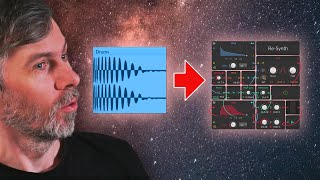
Jul 25, 2025 Tutorial
In this video, I show you how to resynthesize a kick drum in Bitwig Studio using The Grid by extracting and mimicking the pitch and amplitude envelopes from a sampled drum sound. This method allows you to create highly tweakable, high-definition drum presets that can be customized and reused without needing tons of samples. The approach is efficient and flexible, giving you precise control over your drum sounds while you wait for the much-anticipated Bitwig Studio 6 release.
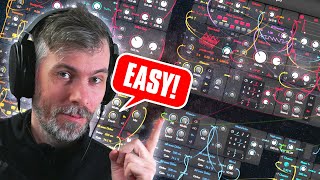
Jul 22, 2025 Tutorial
In this video, I demonstrate how to turn a Bitwig grid patch into a full track by separating and bouncing individual instrument layers using the DC offset trick for modulation-based audio routing. I explain step-by-step how to split sounds within the grid, assign each to separate tracks, and export them for further arrangement and production. While the process isn't perfect or high-end, it allows for creative freedom, layering, and practical workflows to develop unique ambient tracks from simple beginnings.
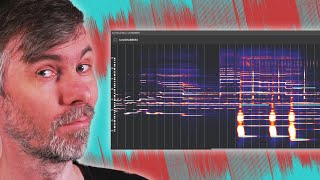
Jul 16, 2025 Tutorial
noteGRABBER 2 is a plugin for any DAW that allows users to manually convert audio to MIDI by visually analyzing a sonogram and painting notes, making it easier to extract melodies, basslines, or chords from tracks.
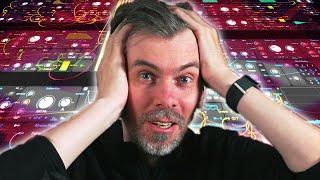
Jul 11, 2025 Tutorial
The video demonstrates how to build a generative techno grid patch in Bitwig Studio's modular environment, breaking down the process of creating drums, bass, arps, and effects step by step. While the patch may look complex, the creator emphasizes it's mainly a matter of arranging basic modules, sound design techniques, and sequencing cleverly, then compacting the layout for visual effect. The process showcases both sound creation and modular workflow tips, with the finished patch to be shared for free on GitHub.

Jul 10, 2025 Tutorial
Forever 89 has released VISCO 2.0, a drum sampler and synthesizer that allows users to morph between different sounds and easily play them in key without needing to set a root note. The update introduces new tonal features, enabling users to turn samples into playable synth patches, create pads, and experiment with harmonics and modulation for unique sonic results. The upgrade is free for existing owners and brings enhanced flexibility and creativity, making it even more useful for sound design and music production.
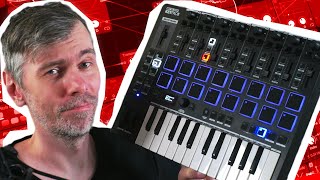
Jul 04, 2025 Tutorial
The reviewer tested the affordable Reloop Keypad Pro DAW controller, highlighting its solid build, useful Bitwig integration, velocity-sensitive keys, versatile controls, and convenient features like battery power, a mini USB hub, and scale modes. It worked flawlessly with Bitwig on Windows and offered flexible mapping and performance options, although switching between modes for clip launching and drumming could be more streamlined. Overall, the Keypad Pro is recommended as a fun, budget-friendly controller for Bitwig users, especially in club settings or for mobile music-making.
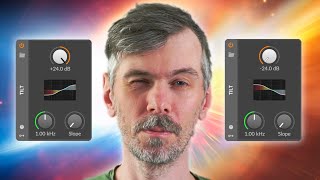
Jun 27, 2025 Tutorial
In this video, I demonstrate a unique technique in Bitwig using pre-emphasis and de-emphasis with tilt EQs to mimic multi-band limiting and achieve more balanced loudness across frequency ranges, without traditional band splitting. By tilting the analyzing signal fed into auto-levelers or limiters, you can shift how loudness is controlled across your mix, changing the tonal balance solely through volume adjustments. This approach allows for more natural and flexible mixdowns and can be applied not just to limiting but also to compression, reverb, and other effects, potentially streamlining your workflow and achieving more transparent results.
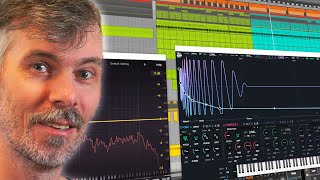
Jun 23, 2025 Tutorial
In this walkthrough, I demonstrate how to create a complete drum and bass track from scratch in Bitwig Studio, focusing on making original sounds without relying on sample packs. I show how to design bass, kick, snare, hi-hats, and percussion, while explaining techniques for modulation, sound layering, and basic mix strategies for punchy results. The process emphasizes experimentation, customization, and the development of personal taste, illustrating that strong grooves and creative sound design are more important than complex melodies.

Jun 20, 2025 Tutorial
In this video, I revisit the Atlas drum sampler plugin after previously favoring XO, exploring its features for organizing and quickly generating drum and bass loops through randomized sample kits and advanced sequencing options. I demonstrate how you can easily map samples from different folders, use the sequencer for creative patterns, and process individual drum elements in Bitwig for powerful sound design and layering. By sharing my workflow and tips, I encourage you to try Atlas for fast experimentation and creative beat-making in your own productions.
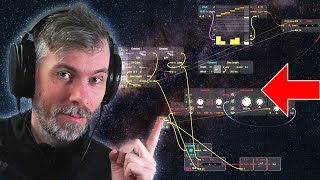
May 30, 2025 Tutorial
In this video, I walk you through a simple and straightforward Bitwig Grid setup for generating probabilistic melodies by storing scale notes and assigning individual probabilities to each. I show how to record and synchronize these generative sequences so you can capture stable, repeating patterns with easy logic for playback and triggering new sequences. This patch is perfect for creating evolving melodies, and you can download it on my Patreon if you don't want to build it yourself.
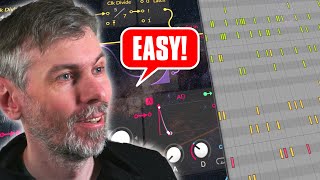
May 28, 2025 Tutorial
In this video, I explain how to create easy and interesting rhythms in Bitwig Studio using the Poly Grid, by sequencing pitches and controlling their playback with triggers, counters, and various clock modules. I show how combining different rhythms and voice stacking can quickly lead to complex, evolving melodies, and demonstrate how to record the resulting MIDI for use elsewhere. Overall, the workflow is flexible, allowing for endless creative possibilities with just a few simple modules.
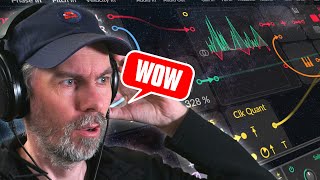
May 26, 2025 Tutorial
In this video, I show why I love using Bitwig Studio for its powerful modular capabilities, allowing me to experiment and create unique sounds and effects without relying on external VST plugins or hardware. I demonstrate building a patch from scratch, making custom reverbs and rhythmic effects, and generating melodies using the grid system, all within Bitwig’s internal tools. My main point is that Bitwig lets me explore, have fun, and quickly develop creative ideas in endless ways, making music production both flexible and enjoyable.
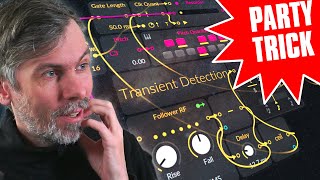
May 23, 2025 Tutorial
In this video, I show you a cool party trick in Bitwig Studio using the Grid, where I turn a simple Dirac signal into random, musical percussive sounds by combining transient detection, randomized filter frequencies, and pitch quantization all synchronized to the beat grid. I demonstrate how easy and flexible the Grid is for creative sound design, layering multiple voices with different parameters and even quantizing live audio input, making it fun to experiment with any sound source. If you want to try this yourself, I'll upload the patch to GitHub for free,like and subscribe for more!

May 16, 2025 Tutorial
In this video, I explain why I love Bitwig Studio, highlighting its platform independence, stability with plugin sandboxing, and incredibly flexible modulation system that lets me modulate almost anything. I also talk about the creative power of The Grid for building custom instruments and effects, as well as Bitwig's responsive support and controller scripting capabilities. Overall, Bitwig Studio’s innovation and reliability make it my top choice for music production, and I can’t imagine switching to anything else.
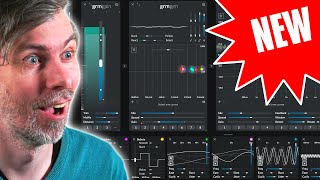
May 12, 2025 Tutorial
Last week, I attended Superbooth in Berlin, where I checked out a lot of synth and software gear, including a standout product from GRM Tools called Atelier, a semi-modular VST focused on sound design and ambience that really impressed me with its intuitive interface and high-quality sound. Developed by just two people (one being a musician), Atelier reminds me of Bitwig’s modular approach and looks promising for creative sound exploration, especially with its excellent modulation options and channel routing features. Look out for its release in September, I’ve included a link to their site below if you want to stay updated!
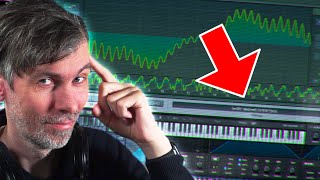
May 07, 2025 Tutorial
In this video, I show you how to use formulas in Serum's wavetable editor to create unique waveforms by manipulating variables like X, V, and Q. By focusing on simple mathematical expressions and randomization, you can generate interesting sound variations across different harmonic bins. Experiment with these techniques to expand your sound design possibilities in Serum.
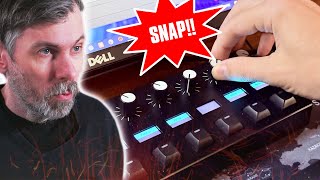
May 02, 2025 Tutorial
Today, I'm excited to introduce the Roto Controller by Melbourne Instruments and its new Bitwig integration, currently in beta. This controller, while perhaps not the ultimate MIDI controller, is unique for its tactile feedback and innovative mapping features. With modes for MIDI, plugins, and mixing, it offers a highly intuitive experience that you can try out at Superbooth or the Bitwig booth.
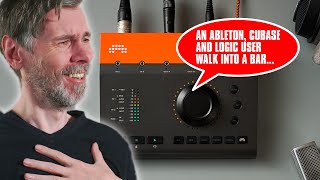
Apr 28, 2025 Tutorial
In this video, I showcase the Bitwig Connect 4/12 and share some creative patching ideas using it, even if you don't own an external synthesizer. I demonstrate how to convert digital signals to analog and back to digital, utilizing feedback loops for distortion and creative sound effects. The convenience of having input and output jacks readily accessible makes it easy and fun to experiment, and I plan to share more tips in future videos.
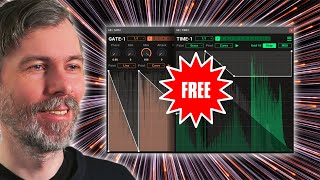
Apr 25, 2025 Tutorial
In this video, I recommend two open-source, free plugins: Gate1 and Time1. Gate1 is great for shaping volume with precision, offering features like waveform visualization that you won't find in similar tools. Time1 allows you to manipulate delay time for creative effects like halftiming or simulating turntables.
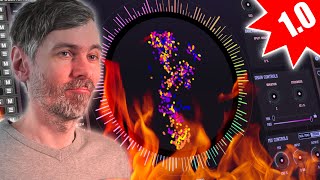
Apr 14, 2025 Tutorial
In today's video, I explored the Concatenator by DataMind Audio, a unique granular audio effect that uses samples from your hard drive to replace the input signal, matching pitch and dynamics with a clever algorithm. It offers various customizable grain settings and can create interesting textures and ambient sounds, making it a versatile tool for music production. There's a seven-day trial available, and I find it an innovative concept worth checking out.
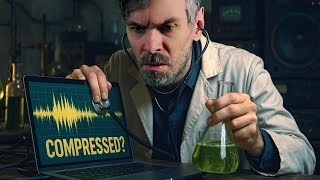
Apr 09, 2025 Tutorial
In this video, I demonstrated how to use a transfer curve to expand the dynamics of certain sounds, ensuring they match the rest of your track using tools like DP Meter 5. I explained how to measure and compare crest values to gauge compression levels and achieve consistent sonic quality across tracks. Additionally, I shared a simple preset in Bitwig Studio for dynamically matching tracks, making mixing and mastering more efficient.
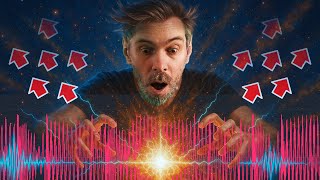
Apr 07, 2025 Tutorial
In this video, I demonstrate how to use expansion to make drum samples from libraries fit better in a mix by stretching the dynamic range. Using Bitwig Studio, I highlight methods like the dynamics module, compressor plus, and transfer curve to enhance the groove and dynamics of over-compressed samples. This approach helps create a cohesive mix where all sounds blend seamlessly.
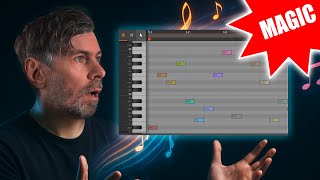
Apr 04, 2025 Tutorial
In this video, I introduce the latest update to my melody maker script, showcasing new features that allow for more expressive and randomized sequences with just one click. I demonstrate how the updates include randomized parameters like timbre, pressure, and release velocity, as well as advanced options like motif development and rhythmic emphasis for creating more dynamic melodies. Additionally, I discuss some technical challenges with the API and share plans for upcoming updates to my other music scripts.
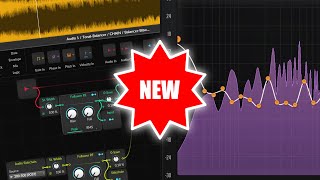
Mar 26, 2025 Tutorial
In this video, I introduce a tool I created in Bitwig called Tonal Balancer, which automatically balances the tonal distribution of a track by using noise sources and EQ to match levels across frequency bands. I demonstrate how to use features like the target knob, custom curves, and rise/fall settings to adjust how the EQ adapts to changes in the audio signal. The preset, available for free on my GitHub, is not yet finished, as I plan to implement a threshold feature to prevent unwanted amplification of quiet parts.

Mar 18, 2025 Tutorial
In this video, I provide an overview and my initial thoughts on the newly released Xfer Serum 2 synthesizer, highlighting its new features like the addition of a third oscillator with multiple modes, an updated GUI, and an expanded modulation system. While I appreciate the free update for existing owners of Dune 1 and the powerful sound design capabilities with features like the wavetable editor and a variety of filter options, I also express some concerns about its interface limitations such as the limited number of LFOs and the cumbersome modulation adjustments. Overall, Dune 2 is a solid and versatile synthesizer package, though not revolutionary, with its best-in-class wavetable editor and added functionalities making it a worthwhile investment.

Mar 10, 2025 Tutorial
In this video, I demonstrate a simple and straightforward method to maintain consistent volume levels when using an EQ on a track, by using a grid patch with a follower to match the input and output volumes. I also showcase how this technique can be applied creatively across multiple tracks to dynamically modulate volumes or match frequency curves using band-splitting. Lastly, I emphasize the versatility and practicality of this approach for enhancing mixes and provide a preset download for convenience.
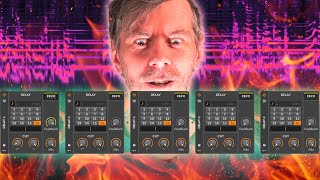
Feb 10, 2025 Tutorial
In this video, I explored Bitwig Studio by using the Delay 1 device to create extended looping effects without relying on a VST. By chaining multiple delay units and incorporating quantization, I achieved synchronized, polyrhythmic loops that can be layered to produce ambient tracks effortlessly. I shared this technique as a straightforward yet powerful way to innovate within Bitwig Studio, inviting viewers to try it themselves and share their experiences.
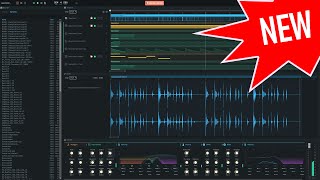
Feb 07, 2025 Tutorial
I'm introducing openDAW, a new digital audio workstation that's completely free, open source, and runs in your web browser, making it accessible for everyone without requiring any login or subscription. Created by Andre Michel, who has a rich history in web-based audio tools, openDAW is a prototype designed to provide music-making capabilities from beginners to experts without any cost or restrictions. If you're interested in getting involved or giving feedback, you can join the openDAW Discord channel, where a prototype party is currently underway.
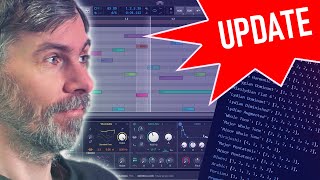
Feb 05, 2025 Tutorial
I've fixed issues with the scale maker script related to hard-coded variables and enhanced the melody maker by adding more scales and modes that are shared between both scripts. Users can now download a separate scales file to customize or share their scales, and there's an updated feature that allows the clip name to reflect the chosen scale. Check my GitHub for the necessary files, and feel free to provide feedback or suggest further improvements.
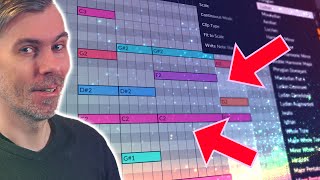
Jan 31, 2025 Tutorial
In this video, I'm introducing Scale Maker, a script designed to help improve your experience in the piano roll by allowing you to fit notes to a chosen scale and even prevent wrong notes from being painted. I also discuss the integration with Melody Maker, enhancements made to the scripts, and how to install them via GitHub, despite some users experiencing issues with Windows Defender. Let me know your thoughts in the comments, and feel free to download and try it out for free.

Jan 29, 2025 Tutorial
In this video, I introduced a new script I created for Bitwig Studio that addresses user complaints about the piano roll by generating random melodies in chosen scales with various customizable options like rest probability, note length variation, and octave start. The script is still experimental, and I'm seeking feedback from viewers to improve it, with plans to develop more features in the future. You can find the script in the description or on my GitHub or Patreon, and using it involves downloading a JavaScript file and setting it up in Bitwig's controller settings.

Jan 27, 2025 Tutorial
In this video, I demonstrate an alternative method for matching frequency content and tonal balance in Bitwig Studio using native tools like FX3, peak limiter, and compressor. By analyzing and adjusting the frequency ranges, you can effectively match your mix to a reference track without the need for external plugins. It's a straightforward and insightful approach to help ensure your mix is balanced and comparable to professional standards.
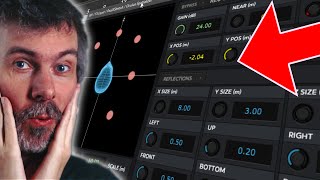
Jan 24, 2025 Tutorial
In my video, I demonstrated how to use the Oculus Spatializer plugin to create immersive spatial sounds by positioning audio sources around the listener's head using headphones for best effect. I showed how layering, stretching, and positioning sounds can craft a wide, binaural soundscape, enhancing pads and drones with increased spatial depth. The plugin is free, and I shared a link in the description for those interested in trying it out.
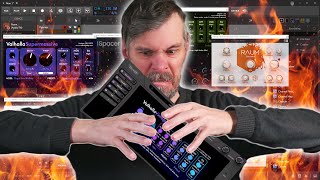
Jan 21, 2025 Tutorial
In this video, I demonstrate how to replicate the silencer effect in Bitwig Studio using native tools. By utilizing a chain container with a reverb plug-in and modulating it with an ADSR, I can reset the reverb tail with each new note. This technique may not match the silencer plug-in's quality, but it provides a similar effect using Bitwig's native capabilities.
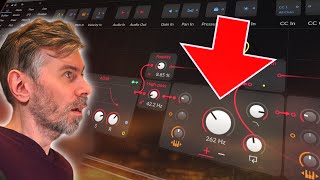
Jan 20, 2025 Tutorial
In this video, I explain how the order and rhythm of overtones are crucial in determining whether a sound is perceived as a single note or a chord. By using devices like the comb filter, we can manipulate and organize overtones to create harmonious sounds when playing chords. I demonstrate various techniques for improving sound quality and harmony, especially when using noise samples and synthesizers, and show how these approaches can lead to better-sounding pads and textures.
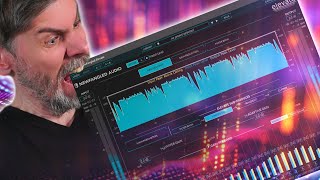
Jan 17, 2025 Tutorial
In this video, I attempted to replicate the Newfangled Audio's Elevate plugin using Bitwig Studio by creating a similar mastering setup with a filter bank, compressor, and clipper. I utilized impulse responses for band splitting, which helped maintain CPU efficiency, and included modular options for compression and limiting to tailor the audio to personal taste. The project file is available for download in the description for viewers to try and provide feedback.

Jan 15, 2025 Tutorial
In this video, I delve into creating a melodic track in Bitwig Studio, starting with a foundational drone and building up with various synths and effects to craft a unique sound. Throughout the process, I experiment with different instruments, modulation techniques, and external gear, while explaining my choices and techniques as I go. Although the track isn't fully polished, I demonstrate how I develop ideas and lay the groundwork for further refinement and mastering.
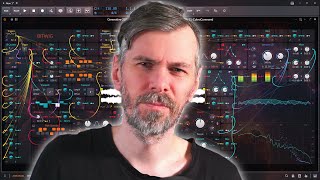
Jan 14, 2025 Tutorial
In this video, I discuss my thoughts on the recent updates to Bitwig Studio, including the release of Bitwig Studio 5.2 and the upcoming 5.3. I express my frustrations with certain features that seem disconnected and my wish for a more modular and integrated approach, especially in the areas of interface design and note handling. Lastly, I invite viewers to share their thoughts and desires for future Bitwig updates in the comments.
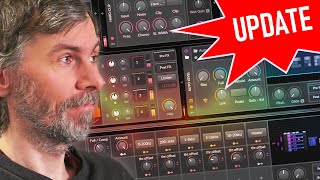
Jan 10, 2025 Tutorial
I made a video about the new Bitwig Studio 5.3 Beta 4 release, highlighting the significant fix in how Note FX Selector, InstrumentSelector, and FXSelector devices now switch to the correct layer before sending a note. I demonstrated the previous issue with note layers not switching correctly and encountered a new bug where the audio engine crashes, which I hope will be addressed soon. Despite the issues, I showcased how to switch between chord layers using key switches, though there's still a problem with note triggering that needs fixing.

Jan 09, 2025 Tutorial
In this video, I demonstrate how to create an unusual chord progression tool using Bitwig Studio, experimenting with note stacking, transposing, and modulation to generate interesting harmonic structures. By leveraging Bitwig's note grid and modulation features, I show how to keep the chords within a chosen scale, like D# minor, while allowing for dynamic changes in chord shapes and progressions. Finally, I provide the preset for download so viewers can explore and customize their own chord progressions.
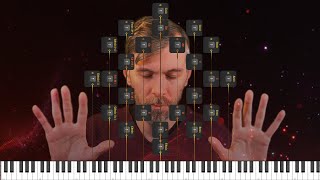
Jan 06, 2025 Tutorial
In this video, I explore harmony theory beyond the typical diatonic framework, encouraging viewers to use the circle of fifths for a broader understanding of chord progressions. I demonstrate how to create more interesting harmonies by borrowing chords from outside the standard scale and discuss using a visual tool I've developed to facilitate this process. This approach allows for more creative freedom in music composition by enabling experimentation with different scales and chords while maintaining a tonal center.
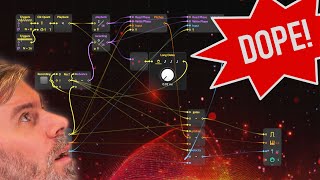
Jan 03, 2025 Tutorial
In this video, I demonstrate how to create a step recorder within Bitwig Studio using the Note Grid by replicating the functionality of a hardware step sequencer. The process involves using arrays to store pitch information for each step, counters to manage step progression, and some additional logic for recording and playback. I've saved the step recorder as a preset, which you can download and customize further, allowing you to build sequences on the fly more fluidly.
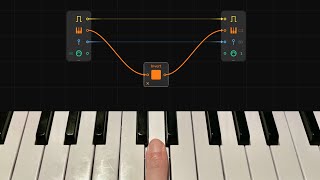
Jan 02, 2025 Tutorial
In this video, I demonstrate advanced techniques for creating chord progressions and melodies in Bitwig Studio using the note grid, focusing on inversion, multiplication, and probability-based note selection. By employing modules like transposers, amplifiers, and sample-hold functions, I explore unique musical possibilities that go beyond traditional scale and harmony theories. If you have questions or want more tips, don't hesitate to reach out, and I look forward to sharing more creative ideas in future videos.
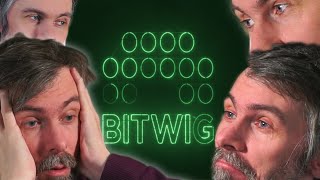
Dec 31, 2024 Tutorial
In this video, I introduced a unique plugin called OSCI-Render that allows you to create visuals inside an oscilloscope using sound. It combines audio and visual effects and supports various file formats like SVG, LUA, and text files, enabling you to encode visuals universally visible in any oscilloscope. The plugin is pay-what-you-want, and I've provided links to it and the creator's YouTube channel for more information.
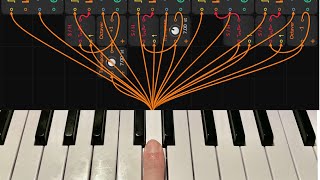
Dec 31, 2024 Tutorial
In this video, I demonstrate a technique for creating melodies and chord progressions using a note grid and virtual instruments, allowing for the layering of sounds with minimal input by playing single notes and adding static pedal tones. This approach enables improvisation with one note to generate complex harmonic textures, which can later be refined or altered. The method is versatile, suitable for various music styles, and emphasizes creativity and experimentation to inspire new musical ideas.

Dec 27, 2024 Tutorial
In this video, I discuss the updates and advantages of Plug Data, a patcher platform that allows users to create their own plugins using a collection of great open-source projects in an accessible and visually appealing environment. I highlight how Plug Data simplifies plugin creation and distribution by integrating various libraries and offering a feature to discover and download patches easily. Overall, I express enthusiasm for Plug Data's innovative approach to plugin development and its potential future impact on the music production community.
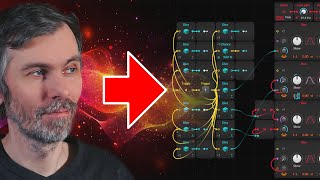
Dec 26, 2024 Tutorial
In this video, I demonstrated a random noise generator I created using a simple grid setup, which can produce interesting and usable sounds by applying various modulations and randomizations. I explained how to blend between random and sub oscillators to achieve different tonal qualities and shared that you can download this preset on my Patreon. Additionally, I highlighted the technical aspects behind the setup, aiming to inspire viewers to experiment with creating random sounds.
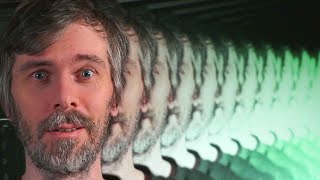
Dec 20, 2024 Tutorial
In this video, I explore various reverb techniques in Bitwig Studio, focusing on how to enhance sound without relying solely on additional VSTs. I demonstrate using the reverb plugin, combining impulse responses with algorithmic reverbs, and creating unique rhythmic effects with convolution and delay devices. Additionally, I experiment with Bitwig's grid and other built-in tools to showcase how versatile and creative sound design can be achieved within this digital audio workstation.
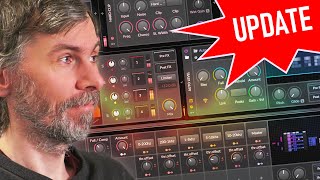
Dec 16, 2024 Tutorial
In this video, I provide updates to my Hard Clip and Auto Level presets, both of which are now available for free download with new features like LED clipping indicators and improved functionality. I've introduced options such as different clipping modes, band splitting, and a stereo link feature, while addressing phase shift issues and incorporating spectral-based solutions. Additionally, for the Auto Level preset, I added features such as an amount knob and stereo link, and I shared an experimental Auto Level Plus version for quick mastering solutions.
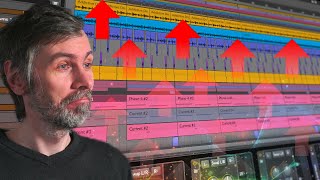
Dec 13, 2024 Tutorial
In this video, I explored using Bitwig Studio's frequency shifter to create dynamic riser effects and enhance bass sounds by manipulating frequency shifts over various timeframes and phases. I demonstrated how to automate the mix knob for transitioning sections and discussed creative approaches, such as applying modulation effects to bass sounds using root frequencies for added interest. Overall, the frequency shifter proved to be a versatile tool for both riser effects and sound design experimentation, offering new possibilities beyond traditional methods.
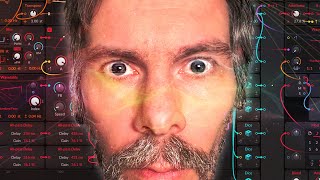
Dec 09, 2024 Tutorial
In this video, I explore the new Stepwise sequencer and modules in Bitwig Studio 5.3, showing how they simplify creating polyrhythms and polymeters within the Grid environment. I demonstrate how to manipulate sequence parameters like loop length, step offset, and playback speed, using features like voice stacking and stereo signal processing to create complex and unique sequences. I'm excited to see how these updates enhance creative possibilities and invite you to share your thoughts and questions in the comments.
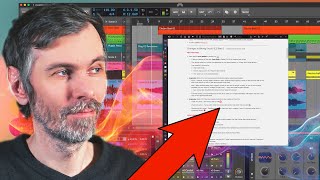
Dec 05, 2024 Tutorial
In my recent video, I highlighted the new features and improvements in Bitwig Studio's 5.3 Beta 2, including a dedicated Frequency Shifter Plus device and updates to the stepwise feature. I also discussed enhancements to the bounce workflow, offering more customizable audio bounce options. Overall, the update brings some great additional features, improvements, and fixes that enhance the user experience.
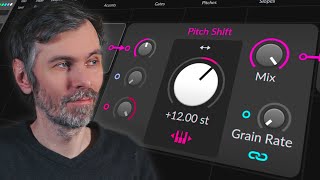
Dec 04, 2024 Tutorial
In this video, I explore the pitch shifter feature in Bitwig Studio 5.3, highlighting its potential beyond simple pitch shifting to create unique and experimental sound design. I demonstrate various techniques, such as modulating the grain rate and using phase modulation, which can produce interesting effects akin to physical modeling and FM synthesis. While not ideal for high-quality pitch correction, this tool shines in creative sound manipulation and offers endless possibilities for experimentation.
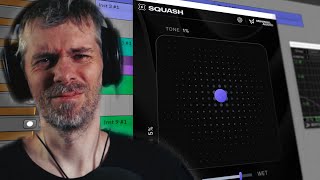
Nov 29, 2024 Tutorial
In my video, I introduced and reviewed minimalaudio's new free plugin, Squash, an over-the-top compressor ideal for genres like dubstep and drum and bass. I explained its features, including the unique "amount knob" that avoids phasing issues, and demonstrated its impact on audio using Bitwig and Addictive Drums. Overall, I found Squash to be a powerful and simple tool worth trying, especially since it's free to download.

Nov 28, 2024 Tutorial
In this video, I dive into Bitwig Studio's new Stepwise step sequencer, exploring its integration with drum machines and how it can be customized using Bitwig's modular system. I demonstrate various techniques to enhance its basic features, such as adding probability, velocity, and groove using modulators and note effects. Through experimentation and creativity, I show how Stepwise, though basic, can be a powerful tool for creating unique musical patterns.
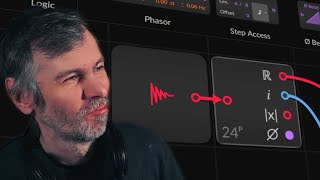
Nov 25, 2024 Tutorial
In this video, I explore the dome filter in Bitwig Studio 5.3, showcasing its unique capabilities like phase shifts and re-synthesizing signals using phase and magnitude outputs. I demonstrate how to create pitch wobble, frequency shifters, and even attempt some FFT re-synthesis inside the grid, which wasn't previously possible in Bitwig. Overall, I see the dome filter as a fascinating addition for crafting creative sound effects and experimenting with new audio techniques.
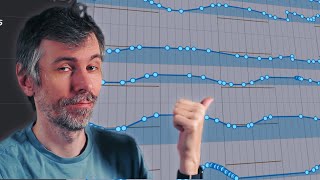
Nov 18, 2024 Tutorial
In this video, I share a powerful technique for adding organic feel to your tracks by using automation in your DAW while staying in the creative flow. I demonstrate how to use the automation feature for recording parameter changes in real-time, allowing for dynamic and unique sound variations. This approach focuses on creativity over precision, bringing life to electronic music by embracing imperfections and avoiding the rigidity of perfectly timed automation.

Nov 11, 2024 Tutorial
In this video, I introduced my free-to-use online audio visualizers, including a newly updated spectrogram that works without any subscription or login. I demonstrated how to use it to analyze music, tweak various settings, and export MIDI files, all while mentioning ongoing improvements and welcoming feedback. Thanks to my Patreon supporters, I can offer these tools for free, and I invite viewers to try them out and contribute through GitHub if interested.
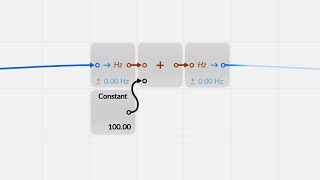
Nov 04, 2024 Tutorial
Over the weekend, I explored an idea where I used a frequency shifter on an A minor sample to create disharmonic or horror sounds by altering frequency relationships. To maintain clarity and avoid artifacts, I emulated the frequency shifting effect using a note grid to shift pitches down manually, allowing for the creation of new harmonic relationships and microtonic scales. This approach is particularly useful for generating unique sounds for horror soundtracks or techno music, and I've shared the patch in the description for those interested in trying it out.
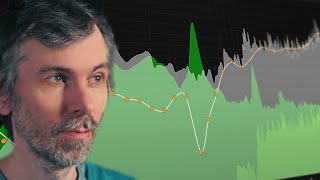
Oct 31, 2024 Tutorial
In this video, I rediscovered an old plugin called Curve EQ, which I've had for around 20 years and find invaluable for layering drum loops by using its match EQ feature to remove overlapping frequencies. Instead of constantly adjusting a regular EQ, I've shown how to use Curve EQ to statically match and inverse the frequency spectrum of a simple kick and snare loop with another drum loop, achieving perfect layering without CPU strain. I also expressed a wish for some of these features to be integrated into the main GUI for easier access, and suggested it to the developer, Alexei.
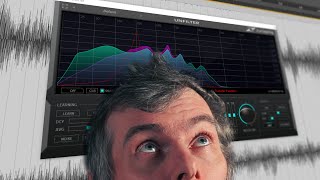
Oct 30, 2024 Tutorial
In this video, I discovered that the Unfilter plugin, which I initially used primarily for removing resonances, has a fascinating feature that allows you to export transfer curves as impulse responses. This capability enables you to mimic the resonances and filter characteristics of one sound on another, creating a more cohesive and authentic sound environment for your audio projects. If you own Unfilter, give this feature a try; if not, consider adding it to your wishlist for future purchases.
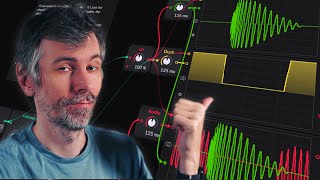
Oct 28, 2024 Tutorial
In this video, I explain the concept of ring mod sidechain modulation and demonstrate how to achieve it in Bitwig Studio. I discuss the potential for distortion using this method and suggest using Bitwig's audio sidechain modulator as a cleaner alternative. Additionally, I provide a more advanced setup in Bitwig's FX Grid for precise control, with both presets available in the video description.
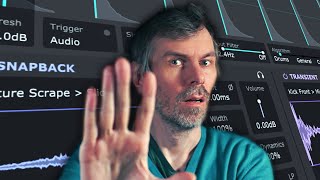
Oct 27, 2024 Tutorial
In this video, I discuss the Snapback plugin by Cableguys, which detects drum triggers to layer samples on top or in front of drum sounds, and compare it to a Bitwig Studio native solution. I demonstrate how to use the Bitwig Replacer device to achieve similar results, offering a free preset for viewers to experiment with. Ultimately, I highlight the Snapback plugin's intuitive interface and quality sample selection as key value points.

Oct 25, 2024 Tutorial
In this video, I demonstrated how to create feedback loops in Bitwig Studio's grid using noise sources, delay, and auto gain to maintain stable levels and explore unique soundscapes. I showed how to incorporate various effects, such as phasers and filters, within the loop to alter the sound while using post-effects like reverb and pitch correction for additional texture. I've also included a downloadable setup for you to try out and experiment with the techniques discussed.
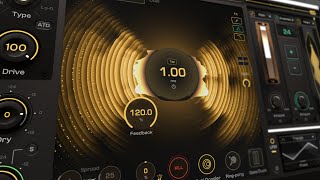
Oct 23, 2024 Tutorial
I recently explored the Ripple Delay plugin by Process Audio and found its ability to integrate effects within the feedback loop, while allowing delay times as low as one millisecond, to be quite impressive. This feature is currently challenging to replicate in Bitwig Studio due to its limitations with buffer size, which affects delay time when effects are included in the feedback chain. I'm hopeful for future updates in Bitwig, but in the meantime, I recommend trying out this plugin to experiment with creating unique soundscapes.
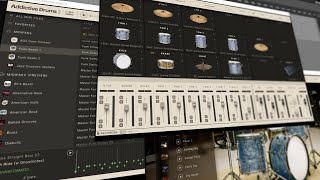
Oct 22, 2024 Tutorial
In this video, I discuss the new free update for XLN Audio's Addictive Drums 2, which I've used for nearly two decades. The update improves the plugin's layout with modern visuals, UI rescaling for better visibility on 4K screens, and some new features like a multi-band compressor and trigger gate. I'm thrilled with these subtle but impactful changes, making it a pleasure to use moving forward.
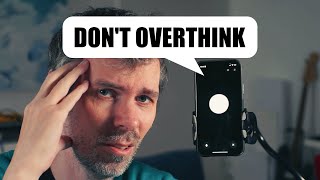
Oct 21, 2024 Tutorial
In this video, I discuss the challenges many music producers face with perfectionism and overthinking in music production and creativity. I share my approach of setting internal time limits to stay in a creative flow and avoid being bogged down by endless tweaking, emphasizing that the mental aspect of creation is often more vital than acquiring new gear. Chatting with ChatGPT helps me reflect on my ideas and explore these topics further, and I'd love to hear your thoughts on this format.
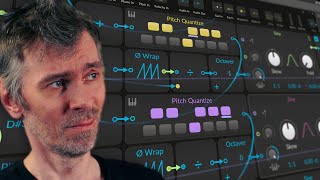
Oct 17, 2024 Tutorial
In this video, I demonstrate how to create interesting descending and ascending pitch sequences in Bitwig Studio's grid by using modules like pitch bus, octave wrapper, and pitch quantizer. I explain how to maintain pitches within a specific octave, use the transport module for polyrhythmic structures, and combine multiple sequences with different parameters. You can find the patch linked in the description to explore these concepts further.
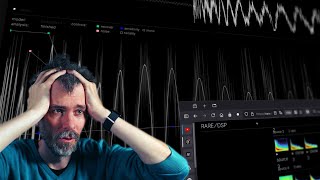
Oct 14, 2024 Tutorial
In today's video, I introduced Drum Clone, a new free plugin designed for extracting and re-synthesizing percussive sounds from tracks with multiple instruments, which is particularly useful for drum and bass producers like me working with classic breakbeats. I demonstrated how to create a new track with Drum Clone, how it effectively isolates kick drums, and discussed its potential for future models focused on snare drums and hi-hats. Overall, I find it to be a handy tool worth considering, especially if more models are introduced, and I wouldn't mind paying for additional features.
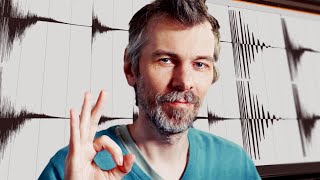
Oct 11, 2024 Tutorial
In this video, I discuss the updates in Bitwig Studio 5.2.5, focusing on the new audio import behavior settings, like the ability to choose between stretch modes and the reintroduction of the raw import option. I demonstrate how these changes affect sample imports and recordings, and highlight additional interface improvements like devices scrolling into view in the chain. Overall, I find these updates to be positive steps forward, but I suggest further tweaks, such as a consistent raw setting for recordings, would make the experience even better.
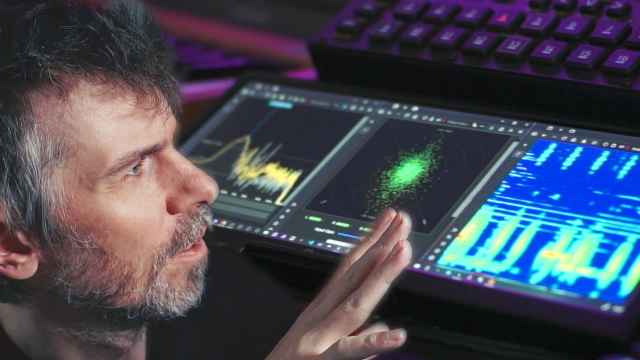
Oct 07, 2024 Tutorial
In this video, I showcase a small touchscreen I bought for $120 and discuss using it as an additional metering screen with custom web-based visualizers I developed. The visualizers, including a vectorscope and spectrum analyzer, are accessible for free through my website and are built using vanilla JavaScript, allowing for easy tweaking and customization. I also provide links to try them out and encourage viewers to share feedback and suggestions.

Oct 03, 2024 Tutorial
In this video, I provide updates on several plugins, including KickNinja's new features like phase locking and improved sample layering, making it one of the best kick drum VSTs available. I also discuss Node Grabber, a straightforward tool for manual audio-to-pitch conversion, although I find it overpriced. Additionally, I share my experiment with creating a spectral analyzer using AI to code web applications, which is accessible online for free.
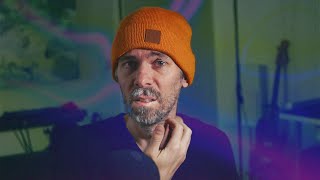
Oct 02, 2024 Tutorial
In this video, I demonstrate how to replicate the functionality of the Plasma plug-in by iZotope within Bitwig Studio. By using techniques like loud split, EQ adjustments, and saturation, I create a flexible method to achieve similar frequency-specific saturation effects without the high CPU usage. I also provide a free preset for download, encouraging viewers to like, subscribe, and share their thoughts in the comments.
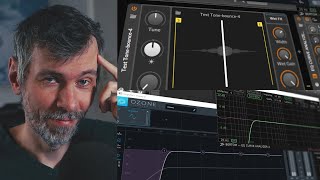
Sep 30, 2024 Tutorial
In this video, I demonstrated how to clone EQ settings using impulse responses, showing the process with tools like an EQ curve analyzer, Ozone 8 EQ, and a convolution device. By recording the output of the Ozone 8 and using a test tone or Dirac signal, I showcased two methods to replicate the linear phase EQ setting. This technique is useful especially if you don't have a built-in linear phase EQ in your DAW like Bitwig.

Sep 27, 2024 Tutorial
In this video, I explore ways to recreate kick drums using only native devices in Bitwig Studio by separating and synthesizing the low-end sine wave from a noisy kick sample. I demonstrate using filters, the Harmonic Split device, and the FX Grid to analyze pitch and volume, ultimately re-synthesizing the low end while discussing the challenges of persisting data within Bitwig. Despite some limitations, such as the inability to save pitch envelope data, I show that this method can effectively replicate kick drum sounds.
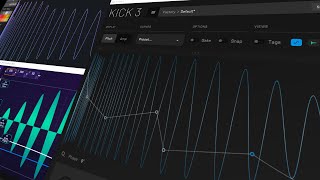
Sep 24, 2024 Tutorial
In this video, I discuss the newly released beta version of Kick3, comparing it to Kick Ninja and highlighting its parallel processing approach for better kick drum creation. Despite having the flu, I demonstrate Kick3's features, such as the ability to analyze and separate acoustic drum loops, key tracking, and a modular effects section. While still exploring its potential and acknowledging some bugs, I'm excited about its future use and improvements.

Sep 20, 2024 Tutorial
In today's video, I'm introducing the Kick Ninja VST plugin, which stands out from other kick drum synthesizers because it allows you to recreate kick drums from samples using AI and features pitch tracking for customizable 808 and trap sounds. You can drag in samples to analyze and mimic the pitch envelope and attack phase, and there's also a useful export feature to easily drag samples into your DAW. The plugin includes typical oscillator and sampler functions, along with distortion and compression, making it a versatile tool for creating unique kick sounds.

Sep 19, 2024 Tutorial
In today's video, I explore how to create cyberpunk, dark techno, and 90s Prodigy-style sounds using basic subtractive synthesis techniques, focusing on raw sounds and heavy distortion. I walk you through setting up a monophonic saw wave, creating a repetitive bass pattern, and adding various effects like LP filtering, diode distortion, and bit reduction to achieve a signature cyberpunk vibe. Lastly, I show how to complement the synths with simple drum patterns and side-chaining for added depth and rhythm, and mention that the project file will be available on my Patreon.
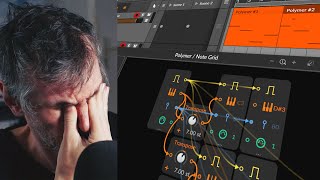
Sep 18, 2024 Tutorial
In today's video, I demonstrated how to create interesting harmonic ideas using Bitwig's note grid by setting up chords with a pedal tone and fifths, making it simple to form complex chords and EDM sounds. I also added elements like an arpeggiator, reverb, and delay to enhance the sound, and showed how to manage different channels for more intricate compositions. This technique allows for quick and easy creation of harmonies without the need for complex chord progressions.
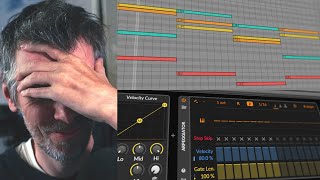
Sep 17, 2024 Tutorial
In this video, I dive into creating music in Bitwig Studio with a BPM of 127, starting with laying down some basic chords and building up the track from there. I demonstrate how to make a bassline, add percussion, and enhance the sounds using various effects and modulators. Finally, I group and tweak the elements to achieve a cohesive track, offering tips and insights along the way.
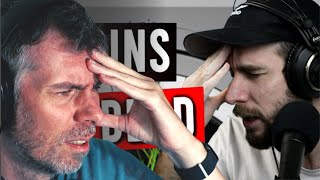
Sep 16, 2024 Tutorial
Hey guys, today I reacted to a video by WeaverBeats discussing the claimed "death of music production plugins." While I disagree with some points, like the idea that plugin companies are doomed, I do think there's potential for innovation, especially with AI and modular environments. Let me know your thoughts on this topic and my video format in the comments below!
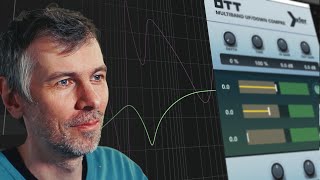
Sep 13, 2024 Tutorial
In this video, I demonstrate how to split audio signals into multiple frequency ranges without introducing significant phase issues, particularly in Bitwig Studio. While traditional analog-modeled EQs and tools like Ozone 8 introduce phase offsets or latency, I showcase methods such as using the spectral FX frequency split in Bitwig and custom convolution presets to achieve clean splits. I provide these custom presets for free in the description so viewers can experiment and give feedback.
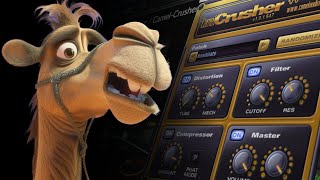
Sep 11, 2024 Tutorial
In today's video, I walk you through my attempt to replicate the beloved early 2000s plugin, CamelCrusher, inside of Bitwig Studio, focusing on its Tube and Mac distortion algorithms, and the filter. Although I left out the compressor and some features like preset saving, I think my version gets pretty close to the original, especially in hitting the key harmonics. You can try my free preset by downloading it from the link in the description, it's a handy alternative to the non-resizable 32-bit VST.
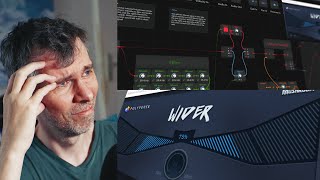
Sep 10, 2024 Tutorial
In this video, I attempt to recreate the WIDER 2.0 plug-in by Infected Mushroom inside Bitwig Studio. I demonstrate how the original plug-in works by creating peaks and dips in the frequency spectrum, which cancel out in mono, and then I showcase my own preset that mimics this effect, with added controls for more customization. Finally, I highlight that my preset may sound slightly better and more natural due to the included convolution reverb on the side channel.
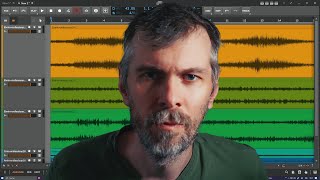
Sep 04, 2024 Tutorial
In this video, I discuss the frustrating issues I encountered while trying to import and seamlessly loop wave files in Bitwig Studio. Specifically, the software automatically offsets the start point and defaults to a stretch mode that introduces unwanted artifacts when the BPM is changed. Although there are ways to circumvent these issues, such as holding down the control key during import, these solutions are not well-communicated and make the process overly complicated.
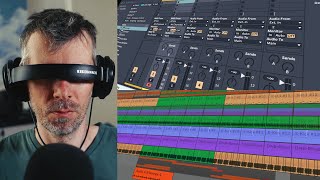
Sep 01, 2024 Tutorial
In this video, I demonstrate two tips in Bitwig Studio. The first tip is about adding dirtiness to kick drums using either distortion, noise modulation, or using the EQ with a render modulator. The second tip is about creating a mono effect below a certain frequency using the mid-side split and a high pass filter.

Aug 29, 2024 Tutorial
In this video, I introduce a preset called Bass Sound Generator that generates a new bass sound every time a key is pressed on a MIDI keyboard. I demonstrate how to create random Bass sound patterns and add drums to create variety in the track. The preset is available for download on my Patreon page.
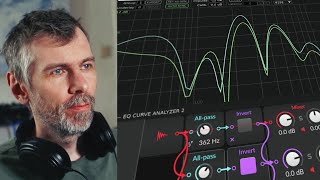
Aug 26, 2024 Tutorial
In this video, I demonstrate how to create unique and interesting filter shapes using Bitwig Studio's Grid and all-pass modules. By combining a dry signal with various all-pass filters and using invert and blend modules, it is possible to create custom filter types with different peaking frequencies and characteristics. These filters can be manipulated and modulated to create dynamic and evolving sounds in Bitwig Studio.
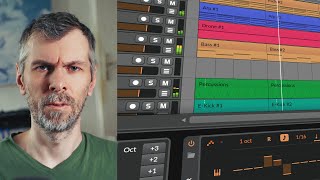
Aug 23, 2024 Tutorial
In this video, I start by using polymer to create a quad progression with a saw 16 fat spread out. I then add chorus and delay effects, as well as a no transpose and a global modulator. Next, I record the sound into audio and put it into a sampler, applying reverb and using the transpose feature. I also create a bass from the recorded sound and add percussion elements to create an interesting pattern. Finally, I introduce a lead sound and make some adjustments to the cutoff, volume, and randomization. I end the video with a crash and thank the viewers for watching.

Aug 19, 2024 Tutorial
In this video, I demonstrate a preset called "Multipressor" that I've created. It functions as a multi-band compressor, allowing for the avoidance of phase issues and frequency dips. The preset offers controls for thresholds, ratio, attack/release, and input gain, as well as the ability to adjust the reaction time and gain reduction of different frequency bands.
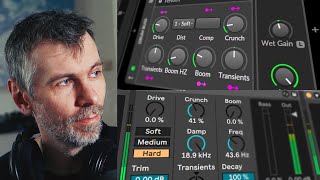
Aug 14, 2024 Tutorial
In this video, I discuss the highly requested Drum Buss device in Ableton Live and how it can be replicated in Bitwig Studio. I provide a free preset download that mimics the functionality of the Drum Buss using native Bitwig devices. I encourage viewers to download the preset and provide feedback to help improve and tailor it to their preferences.

Aug 12, 2024 Tutorial
In this video, I discuss the controversial Sausage Fattener plugin and its effect on music. I explain that it functions as a soft clipper with a compressor in front, preventing audio material from clipping too hard. To demonstrate its impact, I provide a free preset for Bitwig Studio that closely replicates the plugin's sound.
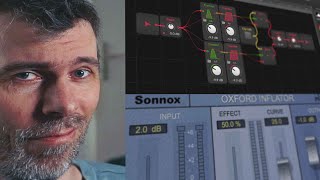
Aug 07, 2024 Tutorial
In this video, I demonstrate how to replicate the Oxford Inflator plugin inside Bitwig Studio. While the Oxford Inflator is essentially just a soft clipper or saturator, I attempted to copy its curve as closely as possible. I provide a free preset for Bitwig Studio users to achieve a similar effect with options like the FX filter plus device, bipolar/unipolar options, or the saturator with a soft knee.
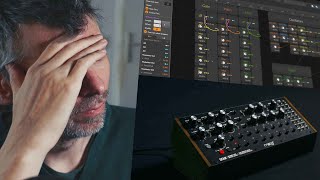
Aug 05, 2024 Tutorial
In this video, I demonstrate the sounds of my PFAM, a replica of the Moog DFAM, inside Bitwig Studio. I explain the layout and modifications I made to the original device, showcasing its percussive capabilities and versatility as a techno sequence generator. The preset is available for free download and I welcome feedback and suggestions for future devices.
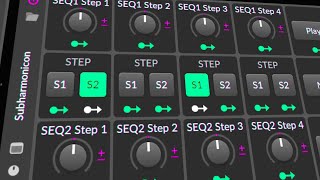
Jul 29, 2024 Tutorial
In this video, I recreated the Subharmonicon synthesizer in Bitwig Studio. The layout consists of two main oscillators with sub ratio knobs for dividing the frequency. There is also a mixing section, routing panel, and pulley rhythms for creating unique sequences.
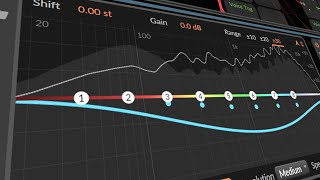
Jul 26, 2024 Tutorial
In the video, I explain how to use a Phase cancellation technique to create a delta signal in Bitwig Studio. By using a chain device with an EQ Plus and tool device, I'm able to cancel out certain frequencies and create a bandpass filter effect. Additionally, I demonstrate how to use Phase flipping and subtracting techniques to manipulate panning in the stereo field.

Jul 24, 2024 Tutorial
In this video, I demonstrate a unique reverb technique using an FX grid instead of a traditional reverb effect. By utilizing voice stacking, modulation, and various parameters, I create a custom reverb sound with subtle variations on each stack. This technique allows for endless experimentation and creativity in crafting unique and dynamic reverbs.
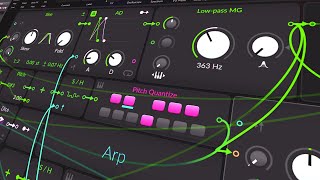
Jul 22, 2024 Tutorial
In this video, I create a generative patch using a Poly-Grid instrument track in monophonic mode. I experiment with feedback for pitch generation and incorporate audio pitch modulation. I add various effects like delay, chorus, filter, and reverb to shape the sound, and create a complex and evolving composition.

Jul 19, 2024 Tutorial
In this video, I show you how to easily synthesize hi-hats using a normal subjective synthesizer like Polymer in Bitwig. By adjusting settings like detuning, unison, and adding noise, you can create a metallic sound with different velocity and filter expressions. To avoid CPU spikes, it is recommended to sample the hi-hats and use them in your project.
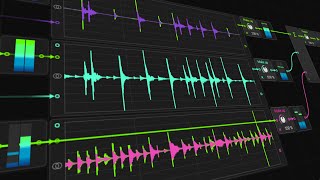
Jul 17, 2024 Tutorial
I just watched a video where Dave Lindenbank created a compressor inside of the grid, and I took his patch and created my own preset called DOTT (Dave OTT) - a three-band compressor expander. It's completely free to download and it includes band splitters, compressors, expanders, threshold and gain controls, VU meters, and EQ and saturation options. It's a powerful tool for squeezing the signal and I hope you enjoy experimenting with it.
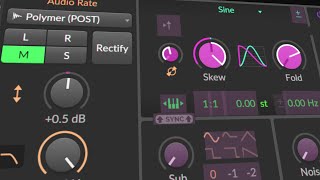
Jul 15, 2024 Tutorial
In this video, I demonstrate a cool trick in Bitwig Studio using the Polymer synthesizer. By attaching an audio rate modulator and feeding it back into the front of the synthesizer, I can create interesting modulation effects and generate unique sounds. This feedback loop allows for subtle or prominent modulation effects, giving a wide range of possibilities for creative experimentation.

Jul 12, 2024 Tutorial
In this video, I showcase my recreation of the Moog synthesizer called Labyrinth inside of Bitwig Studio. I explain the different sections and features of the synthesizer, including the oscillators, mixing section, wave folder, filters, routing options, VCA, and more. I also mention that I might implement a corrupt feature in the future to randomize the sequences, but for now, the preset can be downloaded for free.
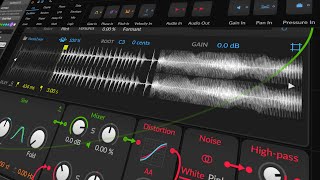
Jul 09, 2024 Tutorial
In this video, I demonstrate how to use the cycles mode in Bitwig's sampler to create bass sounds from random noise samples. By manipulating the harmonics and overtones, I show how to create rich and unique bass tones. I also explore different techniques such as using the sampler or the grid, applying effects like distortion and filtering, and experimenting with modulation to create diverse bass sounds.
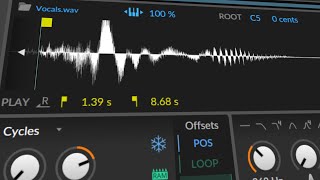
Jul 08, 2024 Tutorial
In this video, I demonstrate how to generate tonal sounds from random noise using the Cycles mode in my sampler. By manipulating the grain size and key tracking, I can create different pitches and waveforms. This technique allows for easy and flexible sound design, making it perfect for creating ambient pads and other tonal sounds.
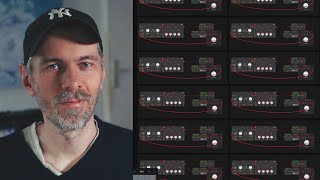
Jul 01, 2024 Tutorial
Sure! In this video, I explored how to utilize voice stacking in Bitwig to create complex modulations and sounds. By extracting values from different voice stacks and cross-modulating them, I demonstrated how to achieve interesting and unique sonic results. Although it may not be the most practical approach, the possibilities for experimentation and creativity are vast.

Jun 25, 2024 Tutorial
In this video, I show how to recreate AU5's Ultra Comp filter in Bitwig Studio for the Bitwig Reddit community. Using a combination of All-Pass filters and signal blending, I demonstrate how to achieve the spectral filtering sound and moiré pattern seen in AU5's video. Additionally, I provide an alternative method using Bitwig Studio's frequency split feature, which offers a more straightforward and CPU-friendly approach to creating different types of filters.
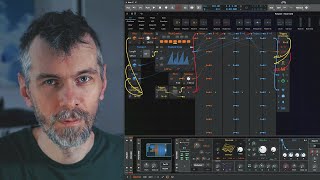
Jun 24, 2024 Tutorial
In this video, I demonstrate how to create a random note generator using the Polymer synthesizer in Bitwig Studio. I use the Node Grid and the Dice module to generate random nodes, and the Triggers module to create eight equally spaced triggers within one bar. I then use the Shift register to record and modify the generated sequence, allowing for variations and alterations in the playback.
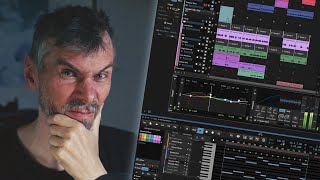
Jun 21, 2024 Tutorial
In this video, I explain how the Barry Kai Bitwig theme editor works and provide a disclaimer that using it is at your own risk. I showcase the steps to download and use the theme editor, including exporting and editing the theme JSON file. I also mention the Bitwig Discord and theming subforum as valuable resources for assistance and share the possibility of customizing Bitwig Studio's colors using community-made themes.

Jun 19, 2024 Tutorial
In this video, I introduced my Markov Chains preset, which is a melody generator based on probabilities. I explained how it works and how I coded it using information from the Hook Theory website. I demonstrated how to create an ambient drone sound using the preset and additional modulations and effects.

Jun 17, 2024 Tutorial
In this video, I explore creating new sounds using the Bitwig Grid. I start by sampling different instruments and then manipulate the samples using various modules such as triggers, quantizers, and modulation. The result is a unique and atmospheric ambient sound that can be further customized and experimented with.
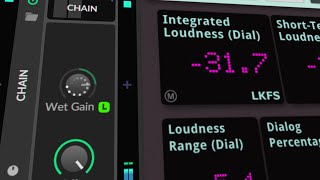
Jun 12, 2024 Tutorial
In this video, I demonstrate a workaround in Bitwig Studio 5.2 to achieve volume normalization for instrument tracks and live audio. By misusing the wet gain learn feature on a chain device and using a tool device to measure the input volume, I create a preset that matches the output volume to a desired reference value. This allows for easy normalization without manual adjustments and can be applied to multiple tracks for consistency.

Jun 10, 2024 Tutorial
In this video, I explain how to use the grid in Bitwig Studio to calculate release time for a compressor based on beats instead of milliseconds. I show how to convert a ramp signal into a sound, measure the pitch using zero crossings, and then convert it to hertz and milliseconds. Although it's a hacky approach, it's a fun challenge and allows for time-based calculations in the grid.
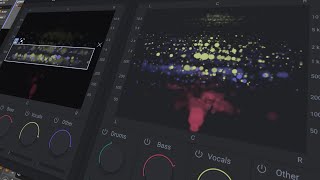
Jun 05, 2024 Tutorial
In the video, I talk about zPlane's new plugin called Peel Stems, which is an updated version of their previous plugin, Peel. It allows you to separate stems in real-time or adjust their volume using the drums, bass, vocals, and other knobs. I demonstrate its effectiveness by showcasing examples with various tracks, highlighting its ability to separate stems even in heavily processed and compressed masters.

Jun 05, 2024 Tutorial
In this video, I explain how I use filters and filter key tracking in my synthesizer sound design. I demonstrate how filters can be used to remove or amplify specific harmonics in a sound, targeting frequencies like the first and second harmonics to enhance bass presence. I also show how key tracking allows filters to follow the frequency of different notes, making the filtering process more precise.
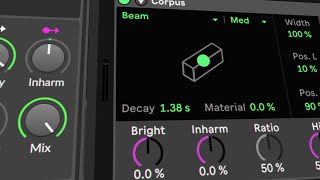
May 27, 2024 Tutorial
In this video, I explain how to replicate the functionality of Corpus in Bitwig Studio. Corpus is essentially a resonator with specific frequencies, and by adjusting parameters like type, resonance, and in-harm, you can create different resonances and effects. I also provide a preset that emulates Corpus within Bitwig Studio and offer the option of using AAS's Object Delay if you want to achieve the exact same sound.
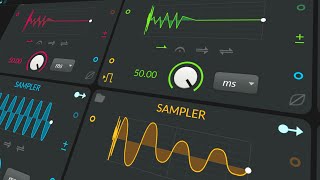
May 22, 2024 Tutorial
In today's video, I show a trick for using the segments module in the grid. By misusing the modules and drawing in waveforms, you can create unique sounds like kick drums and percussion. This method allows for persistence and the ability to save presets, making it a versatile tool within the grid.
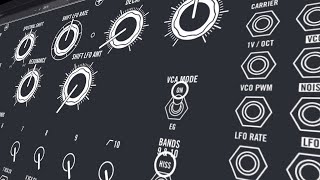
May 20, 2024 Tutorial
The Moog Spectravox is a new vocoder/filter bank with limited features, but the sound quality is what sets it apart. While it's possible to replicate it in Bitwig Studio, it doesn't make sense to do so because the hardware device has a unique sound that can't be replicated in software. However, I've created a preset in Bitwig Studio that mimics the functionality of the Moog Spectravox for those interested in exploring it further.
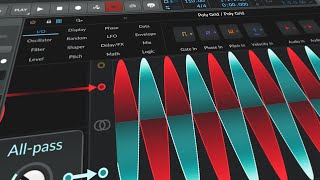
May 02, 2024 Tutorial
In this video, I discuss the All-Pass filter module in Bitwig Studio 5.2. While it may not seem like much, this module is actually quite powerful as it allows for phase shifting at specific frequencies without altering the frequency content. This module can be used for tasks such as phase aligning sounds or creating custom filters within the Bitwig Grid.
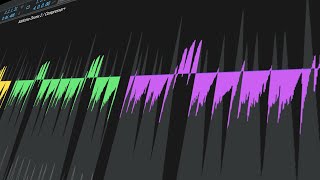
Apr 29, 2024 Tutorial
In this video, I discuss the Compressor Plus in Bitwig Studio 5.2 Beta 1 and clear up some confusion around its functionality. I explain that while it appears to have multiple bands, it is actually a single-band compressor with the ability to adjust intensity and timing for different frequencies. I also provide some tips and insights on using the Compressor Plus in combination with other plugins like the Over Clipper and explore its potential for creating step sequencing effects in the note grid.
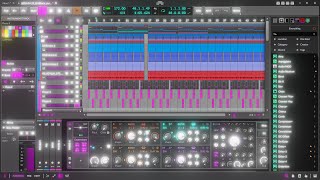
Apr 26, 2024 Tutorial
In this video, I demonstrate how to use the Reshade tool with Bitwig Studio Beta 1. By installing Reshade and selecting the appropriate API, users can apply various graphical filters and effects to Bitwig Studio, similar to how one would modify games with Reshade. However, it is important to note that this is an experimental plugin, so caution should be exercised when using it.

Apr 24, 2024 LiveStream
In my live stream, I showcased the new features of Bitwig 5.2, which included a new compressor and EQs, timeline editing features, improved GUI rendering on the GPU, and the ability to undo changes made within VST plugins. I also explored the new "clipping" device and discussed the quality-of-life improvements implemented in this update. Overall, Bitwig 5.2 is a minor update with significant additions that enhance the user experience and offer more creative possibilities.
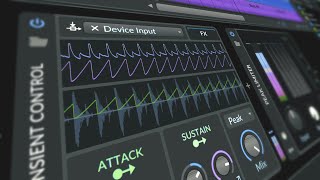
Apr 22, 2024 Tutorial
In this video, I demonstrate how to create a Trance track in Bitwig Studio from scratch, without relying on samples or loops. I provide step-by-step instructions for creating the drum pattern, bassline, melodies, and adding effects. Although the sounds may need further refinement, it shows that it is possible to create a good-sounding Trance track using only Bitwig Studio.
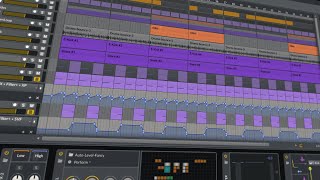
Apr 19, 2024 Tutorial
In the video, I demonstrate the process of creating a drum and bass track from scratch. I start by adding drums using Addictive Drums, then layer in synthetic drums and create variations. I also explain how to mix and master the track to achieve a polished sound.
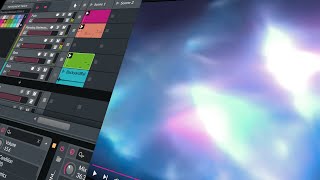
Apr 17, 2024 Tutorial
In this video, I share my process for creating ambient music using samples from YouTube. I demonstrate how to record audio from the Windows output and use it in a granular sampler to create unique pad sounds. I also incorporate a minimal beat, piano melodies, and effects like reverb and delay to build a chill-out tune.
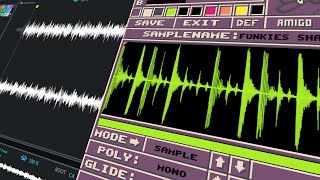
Apr 15, 2024 Tutorial
In this video, I explain how to replicate some of the features of the Amiga sampler in Bitwig Studio. The Amiga computer in the 90s had limitations in terms of sampling quality and space, resulting in a distinct sound with artifacts. By using the bit reduction, sampling rate, and key tracking features in Bitwig Studio, you can achieve a similar sound and even simulate slicing and stretch modes.

Apr 12, 2024 Tutorial
In this video, I discovered a new technique for creating kick drums inside Bitwig's grid. By modulating the phase input of a sine oscillator with an AD signal and multiplying it by -10, the kick drum's tail end stays in place even when changing the pitch envelope. This allows for easy alignment with bass sounds and provides fast control over the attack phase of the kick drum.
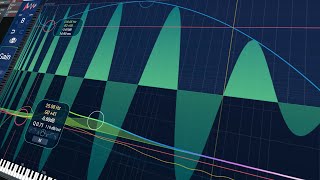
Apr 08, 2024 Tutorial
In this video, I showcase a new plug-in from a German company that costs $22. It is a kick drum generator with a user-friendly interface and precise kick drum generation capabilities. The plug-in allows for easy alignment with the bass and offers unique features such as frequency and gain envelope shaping, as well as an auto gain function.
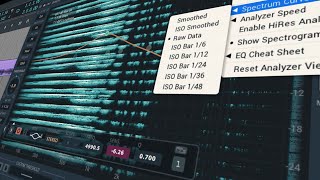
Apr 04, 2024 Tutorial
In this video, I discuss the EQ Three by TP Pro audio, emphasizing that it is often overlooked due to the lack of advertisements or sponsored videos. I demonstrate various ways to use the EQ, such as as a track spacer or a spectral gate. Additionally, I explain how it can be utilized as a "magic cue" or an analyzer for comparing frequency distributions between tracks.
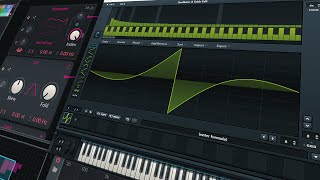
Apr 01, 2024 Tutorial
In the video, I demonstrated how to set up an XO preset in Bitwig Studio to avoid muting and unmuting the return channel. By muting the individual buses and leaving the master channel untouched, you can hear the preview of samples without any audio leakage. Additionally, I showed how to create a mono bass sound using the Serum wave table editor, removing the fundamental and replacing it with a stable mono sine wave, while still maintaining a stereo spread on top.
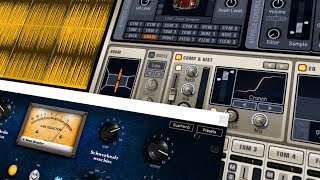
Mar 29, 2024 Tutorial
In this video, I showcase the Schwerkraftmaschine Compressor by Tegeler, a Berlin company, which I received for a 14-day trial period. I demonstrate how the hardware compressor affects drum breaks, recording and speeding them up to create drum and bass break beats, and discuss the various settings and modes available on the device. While I find the compressor to be expensive, I appreciate the analog sound it adds to the drums, although I will likely have to return it due to the cost.
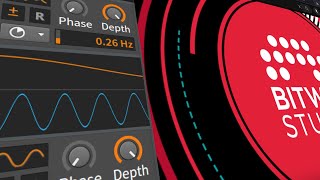
Mar 28, 2024 Tutorial
In this video, I take a trip back in time to an older version of Bitwig Studio, specifically version 1.3.16 which was released in 2017. I explore the features and limitations of this version, including the absence of the pop-up browser and grouping tracks, as well as the basic functionality of devices like the Pulser Synth and the Sampler. It's a nostalgic journey that highlights the progress and evolution of Bitwig Studio over the years.
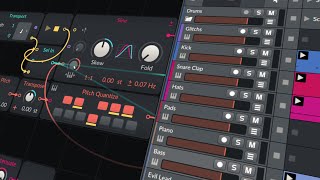
Mar 27, 2024 Tutorial
In this video, I take you through the process of building a sound in Bitwig Studio. Starting with a grid, I create a pattern using a sine oscillator, shape the volume with an envelope, and quantize the notes to a scale. I also add voice stacking, effects, and layer different elements to create a complete composition.
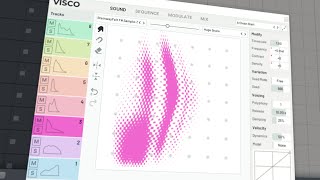
Mar 25, 2024 Tutorial
In this video, I discuss Visco, a new drum sampler that was released five days ago. It is a unique drum sampler that divides the samples into the spectral domain and allows for morphing and twisting using modifiers. This tool is perfect for sound design and specifically designed for percussive sounds.

Mar 21, 2024 Tutorial
In this video, I found a distortion device on Reddit that allows me to load in a wave table and create different distortions by morphing through it. By using a high pass filter, I can eliminate the DC offset and achieve better results. Additionally, instead of using wave tables, I can also use multiple transfer curves, merge them, and blend between them for different distortion effects.
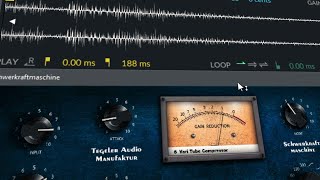
Mar 20, 2024 Tutorial
In the video, I address someone named trendcast who commented on my videos, expressing frustration with making music and comparing themselves to others. I encourage them to reach out to me on Discord to discuss their thoughts and feelings. I then demonstrate how to start making music with simple elements in Bitwig, gradually building complexity over time.

Mar 18, 2024 Tutorial
In this video, I start from scratch in Bitwig Studio to create a nice sounding loop using special techniques. I use the Poly-Grid to create background drones with sine oscillators and phase modulation for interesting overtones. I then sample these sounds and use them in a sampler, add effects, and create percussion elements to complete the loop.
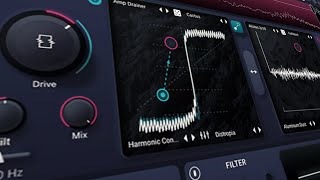
Mar 15, 2024 Tutorial
In this video, I explain how to rebuild the Trash 3 plugin in Bitwig Studio. I demonstrate the process step by step, using various devices and macros to replicate the features and functionality of Trash 3. The video includes download links for the preset and encourages viewers to have fun experimenting and customizing the setup.
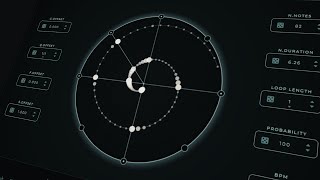
Mar 15, 2024 Tutorial
In this video, I successfully replicated Harmony Bloom inside of Bitwig Studio with a few differences. Harmony Bloom is a Polyrhythm generator that allows you to generate notes and control various parameters such as note length, loop length, probability, offset, and more. Although my replication may not be 100% accurate, it provides a similar functionality within the grid of Bitwig Studio.
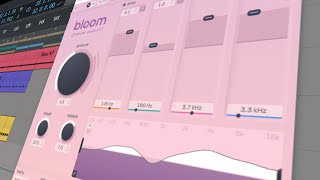
Mar 13, 2024 Tutorial
In this video, I downloaded a plugin called Bloom by Oeksound, which is a spectral-based tone shaper with four bands and adjustable center frequencies and volume changes. It also offers compression, attack and release settings, stereo modes, and presets. However, I found the price of $200 and the requirement of I lock installation for the trial version to be downsides, making it too expensive for what it offers.
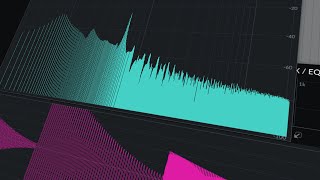
Mar 12, 2024 Tutorial
In the video, I explained the concept of using a tilt setting of 4.5 dB per octave to achieve a balanced mixdown. I demonstrated how this can be applied within Bitwig's EQ+ and also within the Grid. By using the node signal and modulating the gain, I showed how to achieve the desired frequency balance without relying on external EQ processing.
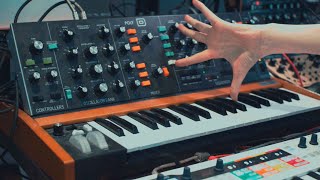
Mar 11, 2024 Tutorial
In this video, I discuss my experience with the Poly-D analog synthesizer and how it sparked my interest in analog synthesis. I explain the basics of the synthesizer, including its tuning issues, oscillator options, and use of filters and effects. I demonstrate how I use the synthesizer to create chord progressions and incorporate it into my music production process.

Mar 08, 2024 Tutorial
In this video, I show you how to build a vocal rider plug-in using the Bitwig envelope follower. To record the modulator as automation data for future editing, you need to use a separate track. Bitwig Studio allows for customization and modification of the algorithm, giving you the flexibility to create your own unique vocal rider.
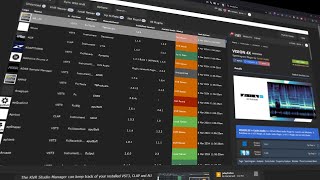
Mar 06, 2024 Tutorial
In my new video, I announced that KVR, the popular plug-in website, has released a free local plug-in management solution for Windows and Mac. This application scans your hard drive for VST2, VST3, and CLAP plug-ins, providing a list of all your installed plug-ins. You can synchronize this list with KVR for updates, reviews, and forum discussions.
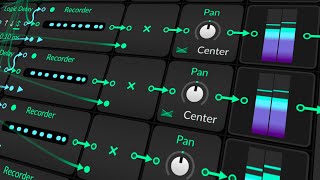
Mar 04, 2024 Tutorial
In this video, I showcase my simple and highly efficient grain preset in Bitwig. By utilizing multiple recorders and adjusting recording length and spread, the preset allows for unique and diverse sounds. With the ability to manipulate play position, volume shape, playback spread, and more, this preset offers a versatile and creative tool for experimentation and sound design.
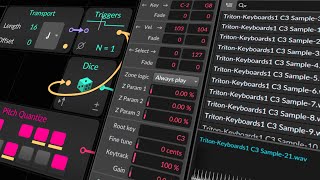
Mar 01, 2024 Tutorial
In this video, I demonstrate a workflow for creating complex patterns and ambient songs using the Trident synthesizer. By sampling different presets from the bell and mallet category, slicing them, and renaming the files, I can load them into a sampler to create a unique and dynamic sound. This method allows for easy experimentation and can be applied to various genres, from ambient to percussion.
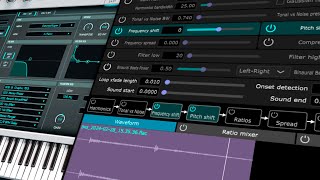
Feb 28, 2024 Tutorial
In this tutorial, I demonstrate how to create ambient sounds using 32 instances of Paul Stretch. I start by selecting sounds from the Triton plugin and adding random reverbs for depth. Each instance is then sampled using different keys, lengths, and stretch amounts, resulting in a varied and powerful drone sound. By layering these instances and adding simple melodies, you can create a thick atmospheric dance track.

Feb 26, 2024 Tutorial
In today's video, I discuss the importance of high precision and latency-compensated sidechain compression on the bass for bass music producers. I explore different methods, such as audio sidechain, note sidechain, and segments, and demonstrate their effectiveness in achieving precise sidechain compression. However, I also highlight a bug when introducing latency within the FX chain of a device.
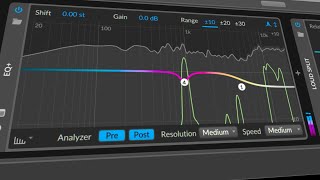
Feb 23, 2024 Tutorial
In my recent video, I received a lot of love, praise, likes, and comments, which warmed my heart. I wanted to continue sharing knowledge about Bitwig Studio and unique ways of eqing. I introduced a visual guide using EQ+ and a loud split device to help identify and adjust frequency distribution, making EQing easier and more efficient.
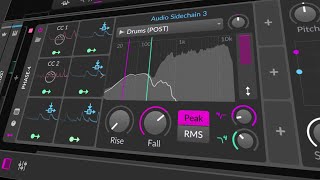
Feb 21, 2024 Tutorial
In this video, I explore using envelope followers in Bitwig Studio to add dynamic modulation to a bass sound based on the amplitude of drums. I demonstrate various techniques such as using audio side chain modulators, working with audio rate modulators, and utilizing the FX grid for more precise control. These methods allow for creative sound design and can bring life and movement to otherwise static loops.
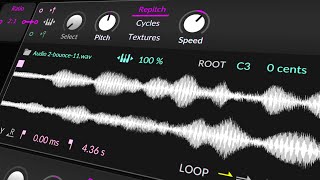
Feb 19, 2024 Tutorial
In this video, I explain how to use frequency modulation (FM) synthesis in Bitwig Studio, showcasing different and unusual ways to apply FM. I demonstrate how to modulate the frequency in a linear way using the speed knob in a sampler, creating harmonic and disharmonic sounds. Additionally, I explore FM techniques using wavetable LFOs, feedback modulation, and modulating the delay time.
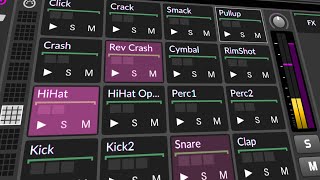
Feb 16, 2024 Tutorial
Today I tackled the problem of using multi-out VSTs like XLN Audio XO with Bitwig Studio's drum machine rack. After some trial and error, I found a solution that allows each drum pad to trigger a separate sound in the VST. By setting up audio receivers and note FX devices, I was able to seamlessly integrate the VST drum machine while still maintaining the functionality of the native drum machine in Bitwig Studio.
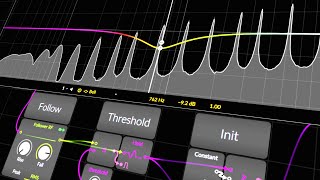
Feb 13, 2024 Tutorial
In this video, I cover three different topics related to EQ techniques. The first is an auto leveler method using bandpass filters and an amplifier to maintain a consistent volume. The second is a multi-band EQ compressor, created by combining an EQ with a grid compressor, allowing for individual frequency control. Lastly, I demonstrate the use of the Loud Split device to selectively affect different frequency ranges in a sound, helpful for removing noise or enhancing specific elements.
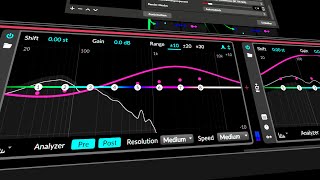
Feb 12, 2024 Tutorial
In this video, I demonstrate creative ideas for using the EQ inside Bitwig Studio. By utilizing the FX grid and voice stacking, I show how to apply polyphonic modulations to the EQ Plus. This technique allows for unique waveforms, modulation offsets, and the ability to sequence and morph between EQ settings.
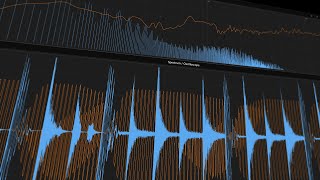
Feb 09, 2024 Tutorial
In this video, I show a quick tip for mixing and mastering in Bitwig Studio. Instead of constantly moving the spectrum analyzer to compare different elements, I suggest using FX or return busses. By sending different tracks to the spectrum analyzer on separate FX channels, you can easily compare and adjust the frequency distribution of various elements in your mix.
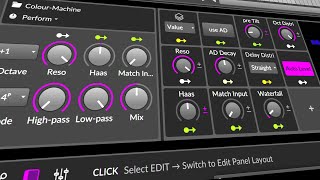
Feb 08, 2024 Tutorial
In this video, I present a free color machine preset for Bitwig that can be used to create resonator effects. By importing chords from one track and using them in the color machine, multiple bandpass filters are created with corresponding frequencies. This preset offers various controls for octave offset, resonance, filter type, Haas effect, and more, allowing users to create unique and customized sounds.

Feb 07, 2024 Tutorial
In this video, I start off by creating a synthwave-style drum pattern using traditional 707 sounds. I then create chords using a synth plugin, layering them to create a retro 80s sound. Next, I add a bassline and a simple top line melody to complete the arrangement. Finally, I add vocals, strings, and additional piano elements to enhance the track, creating a full synthwave composition.
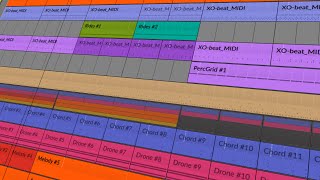
Feb 06, 2024 Tutorial
In this video, I take the opportunity to create a new tune with a Finnish vibe. Starting with a kick drum and bass, I add in a simple saw melody and some chords for depth. I also incorporate hi-hats, claps, vocals, and percussion to enhance the composition, resulting in a complete track that captures the essence of Finnish music.
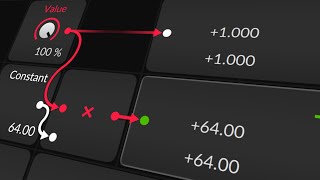
Jan 31, 2024 Tutorial
In this video, I discuss modulation amounts and signals in Bitwig Studio. I explain how modulation typically operates between zero and plus or minus one, but you can exceed this range using certain modulators. I also demonstrate how adjusting a constant value can define the endpoint of modulation without needing to enter the modulation mode.
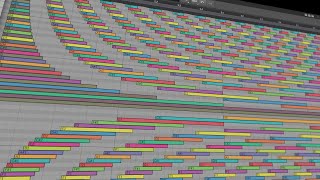
Jan 29, 2024 Tutorial
In this video, I share how I created visually pleasing patterns in Bitwig Studio's piano roll. By using note grids, modules, and pitch manipulation, I was able to create interesting polyrhythms and polymeters. I also experimented with randomizing frequencies and converting them into notes, allowing for unique sounds in the piano roll.
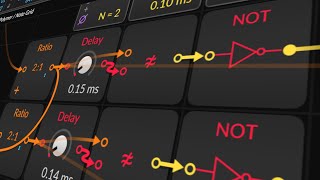
Jan 18, 2024 Tutorial
In this video, I showcase an interesting technique in Bitwig where I create a musical composition using only a node grid instead of traditional note creation methods. By manipulating pitch ratios, step mods, and triggers, I generate unique polyrhythmic patterns and head sounds. I demonstrate how to use the node grid to control multiple instruments, apply effects like reverb and convolution, and create complex chord progressions using subtract and quantize modules.
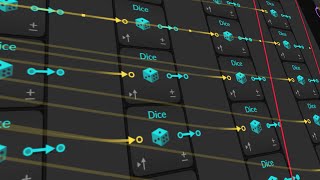
Jan 18, 2024 Tutorial
In this video, I demonstrate a generative techno patch using a sequencer and various modules. The patch allows for the creation of unique kick drums, melodies, and snare sounds while keeping the hi-hats consistent. I also explain how I used modulation and filtering techniques to add variety and create different sounds for each iteration of the track.
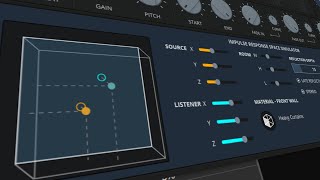
Jan 17, 2024 Tutorial
In this video, I discuss the new update for the Fog Convolver 2 plugin by Audio Thing. The update includes a space simulator created by Lese, which allows users to adjust various room parameters, generate impulse responses, and export them as wave files for use in convolution devices like Bitwig Studio. I also mention that if viewers don't own Fog Convolver 2, they can check out Lese's plugin called Eigen, which offers similar features as a standalone space simulator.
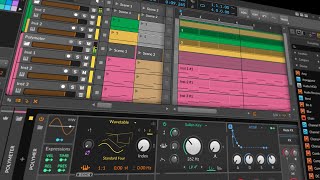
Jan 16, 2024 Tutorial
In the last couple of videos, I discussed pulley rhythms and pulley meters in the Bitwig grid. Today, I want to take a look at how these concepts apply to the Arranger window and Clip Launcher, and share a tip on combining multiple instrument tracks for one synthesizer. By utilizing polyrhythms and polymeters, you can create interesting and complex patterns by varying the subdivisions and clip lengths. This technique can be enhanced further by grouping multiple clips and having them played by a single synthesizer on a group track.
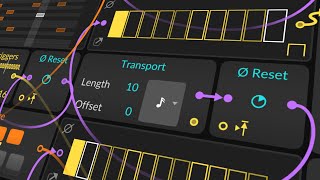
Jan 15, 2024 Tutorial
In this video, I demonstrate different methods of creating easy polymeters in Bitwig Studio. I show how to use a node grid with a monophonic mode, a gates module, and a transport module to generate nodes. I also discuss a different setup using a counter and a trigger module, as well as the use of a clock quantizer for better precision.

Jan 15, 2024 Tutorial
In meinem Video zeige ich, wie man mit Bitwig 5 ambient-inspirierte Musik erstellt – perfekt für absolute Anfänger mit einem kleinen MIDI-Keyboard. Ich starte mit einer Demoversion des M1-Synthesizers und sample dessen Klänge, um einen Wavetable-Oszillator zu erstellen. Anschließend zeige ich, wie man die Wavetable-Position, Polyphonie, Panning und zufällige Modulation manipulieren kann, um den Ambient-Sound zu formen. Zum Schluss füge ich Effekte wie Reverb, Delay und einen Convolution Reverb hinzu, um die Atmosphäre des Tracks zu verstärken.
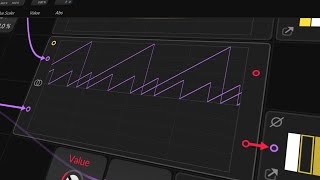
Jan 11, 2024 Tutorial
In this video, I explain the difference between Polyrhythms and Polymeters. Polyrhythms involve subdividing a one-bar grid into equally spaced steps using triggers, while in Polymeters, the subdivisions stay the same but the length of the bar changes. To achieve Polymeters, I demonstrate using a reset module to reset the face signal at a certain point in time.
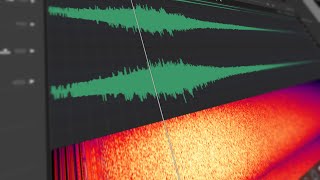
Jan 10, 2024 Tutorial
In this video, I share my process of capturing impulse responses inside Bitwig Studio. I demonstrate how to use a test-tone device to generate the desired impulses, export and edit them in an audio editor, and then use a sampler and convolution device in Bitwig Studio to create unique reverbs. I also explain the importance of combining convolution reverbs with algorithmic reverbs for a more dynamic and realistic sound.
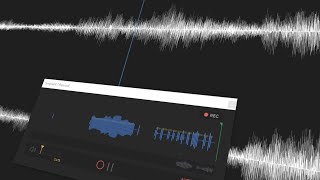
Jan 09, 2024 Tutorial
In this video, I demonstrate an interesting technique for creating ambient pad sounds using the sampler in Bitwig. I start by recording sample material from old synthesizers and then load them into the sampler. By utilizing cycles mode, voice stacking, and modulation, I am able to create unique and evolving pad sounds with ease.

Jan 08, 2024 Tutorial
In the video, I demonstrate how to visualize the behavior of different filters using a spectrum analyzer in the Bitwig Grid. By modulating a sine oscillator and applying various filters such as the comp filter and fizz filter, viewers can observe the changes in the frequency domain. This visual representation provides a helpful way to understand the effects of these filters even without deep knowledge of their underlying theory.
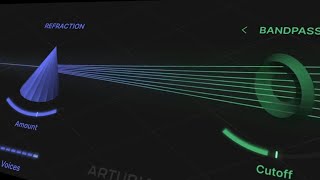
Jan 05, 2024 Tutorial
In this video, I demonstrate how to replicate the concept of Arturia's EFX Refract plugin using Bitwig Studio's Bitwig Grid. I outline the process of creating multiple voices, applying delay and modulation effects, and implementing a bandpass filter for each voice. While I couldn't replicate the plugin's 3D interface or harmonizer, this tutorial serves as an inspiration for creating similar effects in the Bitwig Grid.
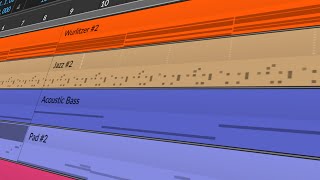
Jan 04, 2024 Tutorial
In this video, I explore creating a jazzy loop in Bitwig Studio, despite having no knowledge of jazz. I demonstrate various techniques, such as using chords, the Wurlitzer instrument, and manipulating drum patterns. I also highlight a new feature I discovered in Bitwig Studio relating to note snapping and share other tricks like using the note grid and synchronizing clocks with side chain signals.

Jan 03, 2024 Tutorial
In this video, I discuss the controversial subscription system of the Current synthesizer and my personal thoughts on it. I then proceed to demonstrate how to create a pad sound using the synthesizer's newest update, utilizing various wave shapes and filters, as well as effects like chorus, delay, and reverb. I also mention the possibility of future tutorials focusing on bass sounds using Current.
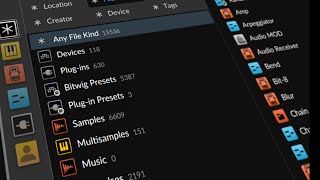
Jan 02, 2024 Tutorial
In this video, I rant about the browser in Bitwig Studio, which I believe is the best browser in any DAW. My favorite features are the ability to search for things with synonyms and the option to sort by date. However, I find the rest of the features to be visual clutter and unnecessary, and I believe the browser should be updated to include automatic classification, tagging, and randomization of file names.
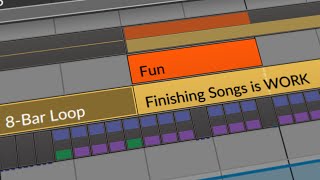
Jan 01, 2024 Tutorial
In this video, I demonstrate the process of arranging a drum and bass loop into a full song. I explain that while the initial creative stage of creating loops is fun, arrangement requires more work and decision-making. I add various elements such as percussion sounds, rides, crashes, and additional effects to enhance the track and create an interesting DJ-friendly arrangement.
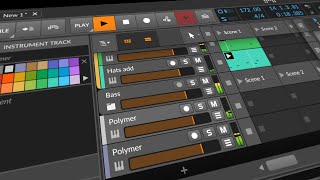
Dec 28, 2023 Tutorial
In this video, I start creating a drum and bass track from scratch using only stock devices in Bitwig Studio. I demonstrate how to create a kick drum, hi-hats, and a snare drum, and then layer them together to create a cohesive drum pattern. I also add a bassline and a background drone to add depth to the track.
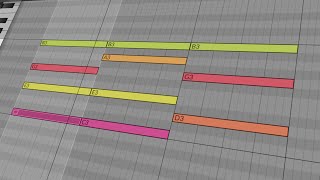
Dec 19, 2023 Tutorial
In yesterday's video, I created a dynamic global transpositioning tool for Bitwig. In today's video, I created a global chord track using a synthesizer and a note clip. By using the note grid and the global chord track, I was able to automatically correct the pitch of my piano solo and create a bass line that followed the chord progression.
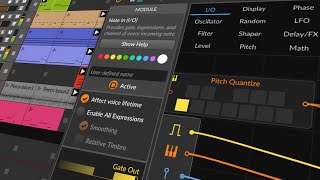
Dec 18, 2023 Tutorial
In this video, I demonstrate different methods to transpose tracks in . I start by manually transposing individual clips, then show how to use the note transpose function on each track. However, the most efficient method is using the node grid with a pitch quantizer to easily transpose tracks globally, allowing for experimentation with different keys.

Dec 14, 2023 Tutorial
In this video, I built a step sequencer that can generate drum patterns with different note ranges and accents. I explained how to use a threshold to determine which steps trigger a drum hit, and demonstrated how to adjust the velocity, gate length, and accentuation of the patterns. The sequencer allows for creative possibilities with polyrhythms and can be used to generate unique drum patterns for music production.

Dec 13, 2023 Tutorial
In this video, I share an idea I had to generate presets on the fly using a note grid and MIDI modulators in Bitwig Studio. By assigning different CC numbers to each voice in the note grid, I can generate random CC values and use them to modulate various parameters of synthesizers or effects. This approach allows for dynamic and unique sound variations within a song or live set.
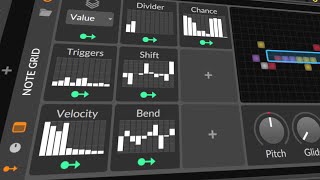
Dec 11, 2023 Tutorial
In this video, I show how to create a drum sequencer in Bitwig Studio using the note grid and various modules. By selecting a drum sampler or VST, creating note clips, and manipulating triggers, velocity, and timing, I demonstrate how to generate unique drum sequences. I also explore features like note stacking, shifting, quantizing, and randomization to create diverse and customizable drum patterns.
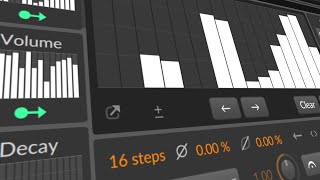
Dec 06, 2023 Tutorial
In this video, I demonstrate how to create a simple yet powerful additive synthesizer using Bitwig Studio 5.1. By utilizing the new voice stacking feature, which allows up to 16 voices, I show how to create unique and dynamic sounds by manipulating parameters such as pitch, volume, decay, phase, and even velocity. With the ability to save presets, this versatile synthesizer is perfect for producing a wide range of sounds, from bell-like tones to pad sounds with the help of effects like reverb and resonators.
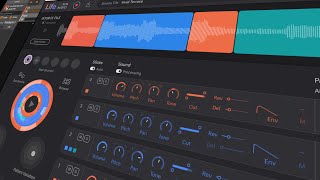
Dec 05, 2023 Tutorial
In this video, I introduce the new VST plugin called Live by XLN Audio. It allows users to find slices within audio material and create percussion loops using different patterns. The plugin offers features such as auto slicing, denoise option, pattern variation, and the ability to drag in samples or record directly from the iPhone app.
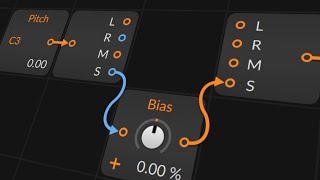
Nov 29, 2023 Tutorial
In this video, I demonstrate a specific feature of the grid where every signal inside is a stereo signal, allowing for interesting possibilities. By using the stereo split and merge modules, I show how to split a stereo signal into two mono signals, change their pitches independently, and then recombine them. This feature can be used not only for audio signals but also for pitch, gate, and phase signals, greatly expanding the creative possibilities of the patch.
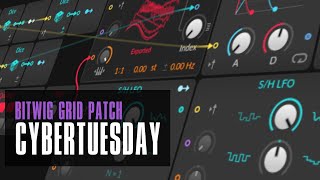
Nov 28, 2023 Tutorial
In this video, I create a generative ambient patch from scratch using Bitwig Studio. I start by creating a drone sound using polygrid and adding pitch modulation to create different pitches on the left and right sides. I then add effects like chorus and filters to add depth and modulation to the sound.
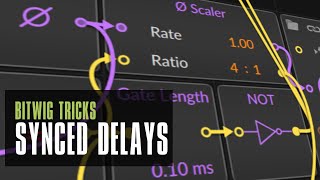
Nov 21, 2023 Tutorial
In this video, I discuss the problem of using delays in situations where there is a shuffle or groove setting. When a straight melody is overlaid with a shuffled delay, it can sound off and disrupt the groove. To address this, I demonstrate how to create a shuffled delay using the FX grid and a feedback loop, allowing the delay to align with the groove setting. I provide a patch for download and encourage viewers to try it out and provide feedback.
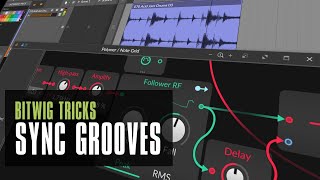
Nov 20, 2023 Tutorial
In this video, I show you a simple way to synchronize melodies or bass lines to a sloppy drum groove using Bitwig. By using a note grid and the audio signal from the drum channel, I demonstrate how to use an audio follower and delay to detect the transients in the drum loop and use them as a clock signal to synchronize the arpeggiator. This technique allows you to apply a custom groove to your melodies while maintaining the swing feel of the drums.
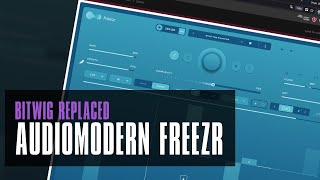
Nov 17, 2023 Tutorial
In this video, I explore creating a buffer repeat effect similar to Freezer within the Bitwig Studio grid. I demonstrate three different versions: one using triggers and modulation, another using predefined triggers, and a third using a scalar with the ability to shape the volume of each repeat. These methods allow for unique and customizable effects that can't be achieved with standard plugins.
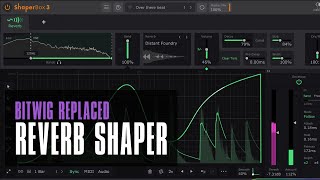
Nov 16, 2023 Tutorial
In this video, I share my experience with replacing VST plugins and discuss how companies don't actually hate me for it because of the advantages offered by certain plugins. I demonstrate how to replicate the features of a reverb shaper using a chain device, tool device, and convolution reverb in Bitwig Studio. Additionally, I explore the unique effects that can be created using the fade mode in the Delay Plus device.
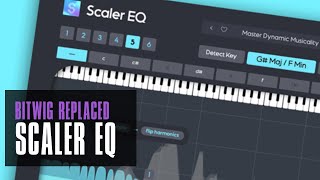
Nov 15, 2023 Tutorial
In this video, I discuss a new EQ plugin called Scaler EQ, which allows you to select a scale and only choose frequencies that are within that scale. I demonstrate how you can replicate this functionality in Bitwig Studio by using EQ plugins and the pitch quantizer. While the interface cannot be replicated, the technical aspects can be achieved.
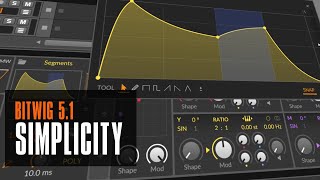
Nov 14, 2023 Tutorial
In this video, I demonstrate how I prefer to use simple envelopes and LFOs instead of complex shapes for creating kick drums and bass lines in Bitwig Studio 5.1. By combining multiple simple modulators with slight variations in timing settings, I find that it produces a much richer and more satisfying sound. I believe that using this approach allows for more flexibility and experimentation, resulting in interesting and dynamic compositions.
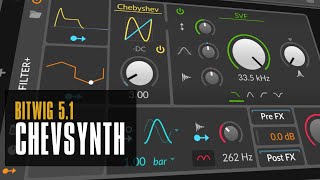
Nov 13, 2023 Tutorial
In this video, I explore the new possibilities of creating synthesizers with effects in Bitwig Studio 5.1 using the Filter+ and Sweep devices. I demonstrate how to use the Chappie Chef as an oscillator and the Wavetable LFO for modulation, resulting in a polyphonic synthesizer. Lastly, I introduce the Sweep effect, which allows for interesting sound creation by combining filters and shape bars.
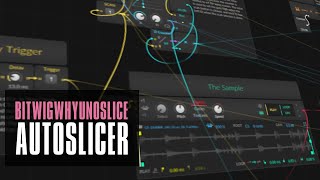
Nov 07, 2023 Tutorial
In this video, I discuss the limitations of the sampling mode in Bitwig Studio, particularly the lack of a slicing feature. To overcome this, I demonstrate how I created a custom slicer within the Bitwig Grid, allowing for easy mapping of slices onto the MIDI keyboard. I provide an overview of the patch and explain the functions of the transient detector, slice mapping, and play triggers.
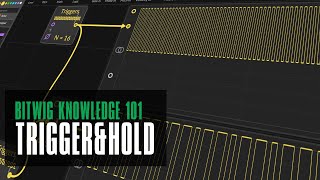
Nov 06, 2023 Tutorial
In this video, I explain the concepts of device phase, triggers module, sample and hold, and clock quantizer in Bitwig Studio's grid. I demonstrate how the triggers module produces a binary signal and divides the device phase into equally spaced steps. I also showcase how the sample and hold module holds a signal's value until triggered, and how the clock quantizer synchronizes signals to a grid size, creating interesting rhythmic patterns.
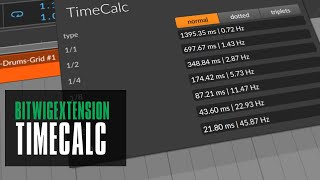
Nov 03, 2023 Tutorial
In this video, I introduce an extension called TimeCalc that provides timing information based on the BPM setting of your project. I demonstrate how this extension can be used to accurately set the length of a kick drum and match the BPM with a specific scale. I also highlight the convenience of having this information readily available in Bitwig Studio.
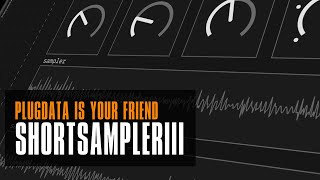
Oct 12, 2023 Tutorial
In this video, I demonstrated how to make improvements to our small plug data sampler. I showed how to utilize symbols and send/receive objects to simplify the patch, as well as addressed bugs and added a solution to the clicking problem when writing and reading from the same array. Additionally, I explained how to convert the length of the buffer from seconds to milliseconds and sync it with the host's BPM using the playhead object.
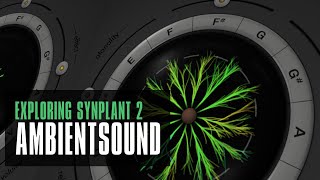
Oct 09, 2023 Tutorial
In this video, I demonstrate my process for creating ambient sounds and tracks using the Synplant synthesizer. I start by exploring different sounds and using the randomize feature to find new ones. I then adjust the envelopes and effects, and also incorporate Supermassive and Paul Stretch for added texture and ambiance.
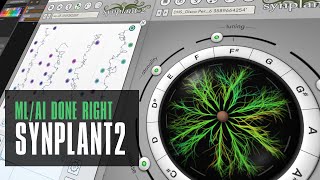
Oct 04, 2023 Tutorial
In my latest video, I discuss SynPlant 2, a groundbreaking synthesizer with the new GenoPatch feature that uses machine learning to create FM patches from samples. This feature allows users to generate multiple FM patches from a single sample, with options to adjust tuning, volume, and grow out different sound variations. I believe this is a game-changing innovation in the world of synthesizers and hope to see other synths incorporate similar features in the future.
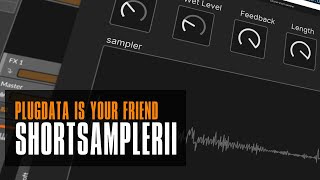
Sep 15, 2023 Tutorial
In this video, I continued working on my sampler or looping station patch inside Plug Data. I made some improvements to make it more dynamic and turned it into a plugin-like interface. First, I addressed the issue of fixed numbers by using the sample rate module to get the current sample rate of the DAW. This allows the patch to adapt to different sample rates. I also used a dynamic variable for the buffer size by using the send and resize commands. This way, the buffer size can be changed based on the desired length of audio to be recorded. Next, I made the fade out delay time dynamic by subtracting 200 milliseconds from the buffer length. I also added a feedback feature to create a decaying audio signal.

Sep 08, 2023 Tutorial
In this video, I demonstrate how to use Pure Data as a plugin inside Bitwig. I explain the process of recording and sampling audio into an array, manipulating the playback speed, and adding fade-in and fade-out effects. By understanding these techniques, viewers can explore creating their own plugins or prototype their own audio projects.
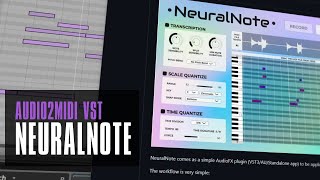
Jul 20, 2023 Tutorial
The video is about a website called Basic Pitch developed by Spotify, which converts audio to MIDI. However, the drawback is that it runs slowly in the browser. The video then introduces Neural Note, a native VST plugin developed by Damien that can be used in any DAW. It shows how to use Neural Note in Bitwig Studio to convert an audio file of a piano sample into MIDI. The video explains the various settings and features of Neural Note, including note sensibility, split sensibility, minimal note duration, scale quantize, pitch bend mode, and time quantize. However, the video mentions a drawback with the recording feature and suggests improvements for future updates. Overall, the video recommends Neural Note as a useful tool for converting audio to MIDI and provides a link for viewers to download it.
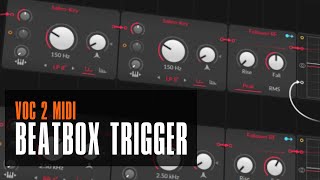
Jun 05, 2023 Tutorial
In this video, I show how to record your microphone and convert it into MIDI notes to trigger random samples in Bitwig Studio. To do this, I use a trigger to trigger the kick drum, snare, and hi-hat samples, and a hardware device to select the microphone input. I also use an auto-leveler with a follower, threshold, and sustainer to amplify the vocals and filter out noise. To separate the sounds, I use a sound key filter with a bandpass, low pass, and high pass, and use logic to exclude certain combinations of triggers. Finally, I use a quantizer in trigger mode to put all the triggers on the grid. Overall, this process requires a lot of tweaking and filtering to find the right sweet spot, but it can be done in Bitwig Studio with some experimentation.
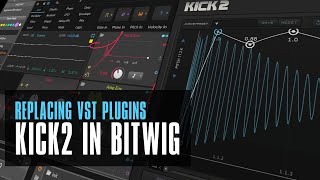
Apr 17, 2023 Tutorial
In this video, I show how to replace Kick 2 with basic grid patching in Bitwig Studio. I demonstrate how to recreate the functions of Kick 2 using the grid, including the oscillator, envelopes, click sound, EQ, distortion, and more. This offers more flexibility and customization options compared to using Kick 2, allowing users to create their own unique kick drum sounds.
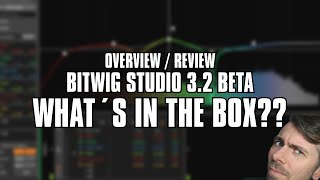
Apr 19, 2020 Tutorial
In this video, I give an overview of the new features and additions to Bitwig Studio 3.2 beta. The biggest addition is the new EQ Plus device, which allows for easy EQ adjustments without the need to open a new window. Other additions include a new spectrum analyzer with a customizable slope, a saturator with an expander feature, and new options for selector devices. The arpeggiator and polygrid also have new features, such as randomized starting offsets and an interpolation option. Additionally, there is a new module called the array, which allows users to store and retrieve values at specific indexes. Overall, the new features are useful and enhance the flexibility of Bitwig Studio.
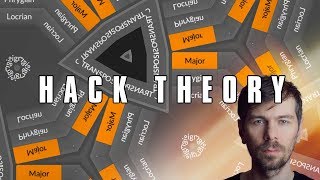
Jul 07, 2019 Tutorial
In this video, I talk about a diatonic transposer that can be used in Bitwig to create chord progressions. By using the diatonic transposer, you can correct wrong notes to the right notes of a scale, making it easier to create chord progressions that stay within a specific scale. I demonstrate how to use the diatonic transposer in Bitwig by choosing a scale and mode, and then using the multi-note function to duplicate the notes to different keys. This allows you to easily find starting chord progressions. I also show how to use the diatonic transposer with an arpeggiator to experiment with chord changes, and how to use it with a bassline by using the note receiver and the arpeggiator. Additionally, I introduce the plugin "Cthulu" which allows you to choose specific notes from a chord to create melody lines. I explain that while diatonic chords can be a good starting point, it's important to break out of the diatonic scale scheme at times to add variation and interest to your compositions. I hope this tutorial provides some ideas for creating interesting melody lines and chord progressions, and I encourage viewers to comment with any questions or tutorial requests.
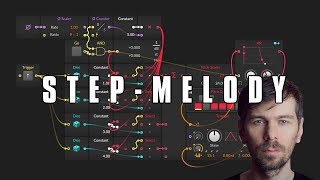
Jul 02, 2019 Tutorial
In this video, I show you how to create a step sequencer that generates a melody on a click and in scale. I start by setting up a polygrid and creating a clock using a scaler. Then, I use a counter to create the step sequencer and apply some math to get clean integer values for each step. I use a dice to generate random notes and a comparing module to trigger the steps. I also use a pitch scaler to narrow down the range of the notes and a pitch quantize module to further refine the melody. Finally, I demonstrate how to use logic operators like smaller and bigger to manipulate the signals. Overall, it's a basic setup, but you can customize and expand on it as you wish.
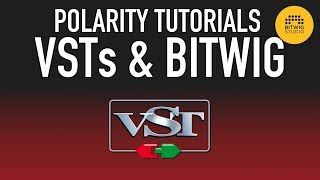
Sep 12, 2017 Tutorial
Hey everyone, today I demonstrated what you're missing if you use a lot of VST plugins but don't utilize Bitwig. I showed how Bitwig's modulators can easily control parameters within both native devices and VST plugins, creating complex modulation patterns and saving them as presets. If you found this helpful, please like, subscribe, or support me on Patreon, see you next time!
More Tags to choose from:
posts Bitwig FromScratch Tutorial German Talk Skyence bitwig-guides Audio-FX Poly-Grid articles Guidelines Knowledge PDF Brain Neurosience Webtool Tempo Mixing Harmony helpers Chords Scales community-report Community release Polarity Music Bandcamp music-videos Ambient Hardware Jam Drum-and-Bass Mixtape fawm Behringer Moog Retro polarity-music Bitwig-2.0 VST-Plugin Audio-Effects Bitwig-3.0 Presets Sampling Generative Melodies Note-Grid Bitwig-3.2 Modulators Bitwig-3.1 Plugins Preset Sound-Design Replace VST Note-FX Polysynth MPE Roli Melda Bitwig-4.4 MinimalAudio Distortion Midi Arturia Groove Drums Filters FX-Grid Bitwig-4.3.4 Physical-Modeling Eurorack Instrument Arrangement Automation Risers Transitions Audio2Midi OpenSource PlugData Reverb Clever-Audio-Plugin-Clap AI download FM-synths machine-learning oscillators soniccharge Sound-Generator SynPlant Synthesizers Compiler Heavy-Compiler Synth Current Granular-Synthesis Pads Vector XY-Instrument Touch-Designer Video-Edit Visuals Extension Beginners Bitwig-5.1 Glitch Sync Delay Signals xlnaudio additive Sequencer Euclidean Bitwig-5.1.2 No-Grid Stock Finishing-Songs Thoughts Browser Jazz M1 Convolution Polyrhythm Polymeter Clip-Launcher AudioThing Lese Techno Modulation Synthwave Routing Spectral tests paulxstretch Triton Grains Patreon Utility Analogue Oeksound Bitwig-5.1.6 Kilohearts Project Bitwig-1.3.16 Tegeler Wavetable tbproaudio Amiga Bitwig-5.1.7 Trance Bitwig-5.2b1 Theming Giveaway Bitwig-5.2b2 Segments Ableton Bitwig-5.2b5 key-tracking EQ zplane Bitwig-5.2b7 Calculations Markov Shift-Register Bitwig-5.2b8 Bitwig-5.2b10 Voice-Stacks Bitwig-5.2b11 Feedback Dynamics Bitwig-5.2b12 Bitwig-5.2b13 Bitwig-5.2 sonnox dadalife Bitwig-5.2.1 Bitwig-5.2.2 Bitwig-5.2.3 Problems Audio-Tracks reaction EDM Bitwig-5.2.4 Kickdrums fft Software Bitwig-5.2.5 process.audio Impulse-Responses Bitwig-5.3b1 Freq-Shifter Bitwig-5.3b2 Bitwig-5.3b3 Bitwig-5.3b4 StateOfBitwig Bitwig-5.3b5 Mastering ControllerScript Bitwig-5.3.2 openDAW Bitwig-5.3b10 Bitwig-5.3.1 Bitwig-5.3.8 Connect-4-12 GRMTools Waveguide reloop Bitwig-5.3.10 Application Bitwig-6b1 Bitwig-6b2 Bitwig-6b3 bitwig-grid-course bitwig-classic-sounddesign




























































































































































































































